



WHY WORK WITH US?

WHY WORK WITH US?














We can help make your process a success. Talk to our sales team today!


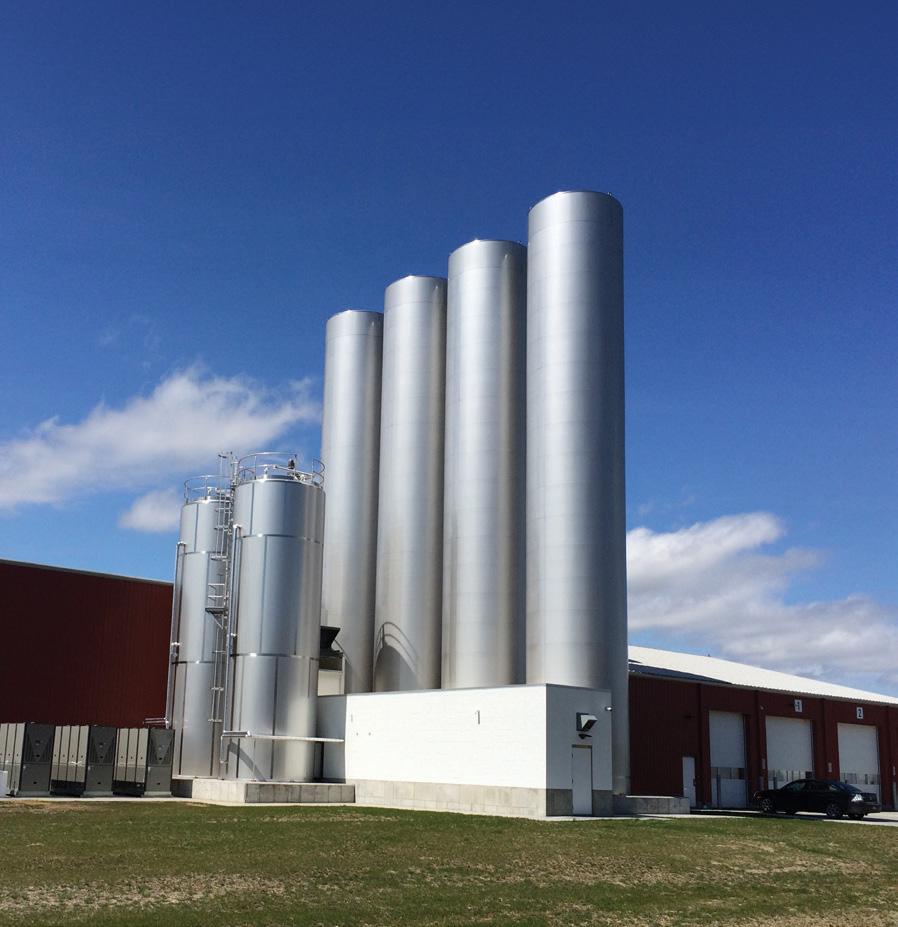


EXECUTIVE DIRECTOR
Alex Walsh
BUSINESS OPERATIONS MANAGER
Leanne Ziemba
PRESIDENT
Daniel Lausch Lactalis USA – Commonwealth
VICE PRESIDENT
Rebecca Wallick HP Hood
TREASURER
Adam Seybolt Stewart’s Processing Corp.
SECRETARY
Ryan Elliott Byrne Dairy
PRESIDENT
Daniel Seitzer
Ecolab
VICE PRESIDENT
Paul Knoerl Pactiv Evergreen
TREASURER
Ryan Osterhout KCO Resource Management
SECRETARY
Bruce Alling
Double H Plastics, Inc.
PUBLISHER
Bill Brod billbrod@nedairymedia.com
EDITOR
Courtney Kless courtneyk@nedairymedia.com
CONTENT DIRECTOR
Steve Guglielmo steveg@nedairymedia.com
RESEARCH & DEVELOPMENT COORDINATOR
Athena Cossette athena@nedairymedia.com
COPYWRITER
Nicole Smith
CONTRIBUTORS
Melinda Aiken
GRAPHIC DESIGNER
Renate Wood, Robin Barnes
SALES
Tim Hudson thudson@nedairymedia.com
Lesli Mitchell
lmitchell@nedairymedia.com
Jake Horodnick jakeh@nedairymedia.com
PRODUCED BY
Northeast Dairy Media
Editorial correspondence should be directed to courtneyk@nedairymedia.com
Advertising correspondence and materials should be sent to lmitchell@nedairymedia.com
View our media kit to discover the opportunities to reach NDFA members.

An official magazine of the Northeast Dairy Foods Association, Inc., a nonprofit organization. This publication carries authoritative notices and articles in regard to the activities and interests of the associations. In all other respects, neither the association nor the producer of the publication, Northeast Dairy Media, is responsible for the contents thereof or the opinions of the contributors.
The entire contents are © 2025 by Northeast Dairy Media. Nothing may be reproduced in whole or in part without written permission of the publisher. The association and Northeast Dairy Media reserve the right to print portions or all of any correspondence mailed to the editors without liability on its part and no such correspondence will be returned.
Visit The Northeast Dairy Foods & Suppliers Associations online at ndfsa.org for current information on association programs and services, or call the association at 315-452-MILK (6455). Questions and comments may also be sent to the association at leanne.ziemba@ndfsa.org

BY DANIEL LAUSCH PRESIDENT, NORTHEAST DAIRY FOODS ASSOCIATION
In this edition of Northeast Dairy Magazine, we are exploring the subject of trends.
Since dairy is in our association’s name, let’s start with the dairy cows living on the farms here in the northeastern U.S.
Today, we have fewer dairy farms than we did 20 years ago, but those currently operating tend to milk more cows and raise fewer replacement heifers. They are also generally doing a better overall job of providing what is best for the dairy cows, and in turn, the cows are producing much more milk per lactation than they did 20 years ago. If each cow can average one additional productive lactation, each farm can raise less replacement young stock.
As a result, many dairy farms are now breeding a percentage of their less productive dairy cows to beef bulls, producing a dairy/beef cross calf that will be worth considerably more at the weekly livestock auction. The buyers of these crossbreed dairy/beef calves are looking for them to enter the beef cattle sector of production agriculture either as future beef cows expected to produce a yearly beef calf or as steers entering a feedlot finishing operation.
Next, let’s look at the milk tankers picking up milk from each dairy farm. Twenty years ago in the Northeast region, the larger dairy farms could fill a milk tanker every other day, but farms with enough cows to fill a tanker by themselves were few and far between. Among today’s dairy farm population, filling a milk tanker every other day — or even every day —
from a single farm is very common. In fact, we have now moved from an individual dairy farm filling one tanker per day to now filling more than one per day. We have seen tremendous growth on individual dairy farms in regions with access to good-quality cropland, labor, enough water to grow the forages needed to feed hundreds of dairy cows, and enough cropland to utilize the manure with all the nutrients applied for growing the next year’s crops.
Our dairy plants are now finding ways to handle more milk with less manual labor. This is where we see larger vats and more efficient fillers and packaging equipment. New conveyors supply automated palletizers, which can stack faster and safer than one or two people can stack and shrink-wrap the finished product pallets by hand.
Today’s consumers prioritize four items: convenience, health, variety, and sustainability.
No single factor is more important than the others, but if your product misses one or two of the four items, your future sales volume will not look promising (and staying on the retail shelf for yet another slotting cycle will be riskier). If your company’s retail product could be improved in any of these four basic areas, you should work to improve your SKU. As an example, is just one component of your packaging keeping it from being placed in the recycling bin versus the trash bin? Explore healthier ingredients. Explore finding a better recipe mix. Is a cleaner label keeping you from improving toward these four consumer trends?


L
Saverio
Pr

BY DANIEL SEITZER PRESIDENT, NORTHEAST DAIRY SUPPLIERS ASSOCIATION
s we move through 2025, it’s easy to get concerned with things we don’t control. Whether it’s politics, when Taylor Swift will release a new album, or what the Fed will do with interest rates, we don’t control any of it. What we CAN control is staying vigilant and in tune with our customers and their needs. The dairy industry faces a dynamic landscape with evolving consumer preferences, technological advancements, and environmental considerations. To remain relevant in this competitive market, producers and suppliers must stay informed about key trends and adapt to the changing demands. In short, we need to ASK.
Having said that, here are some thoughts as we explore the trends shaping the dairy sector, the critical factors for maintaining relevance, and the innovative products capturing consumer interest.
One of the most prominent trends in the dairy industry is the growing emphasis on health and wellness. Consumers are increasingly seeking products that offer nutritional benefits, support digestive health, and cater to specific dietary needs. This shift is driving demand for dairy products enriched with probiotics, omega-3 fatty acids, and other functional ingredients. As an industry, we must prioritize transparency and clear labeling to communicate the health benefits of products effectively. Clean, simple, and transparent — just like we all want in our personal lives and choices, too.
Environmental sustainability continues to be a critical concern for both consumers and industry stakeholders. Dairy producers are adopting eco-friendly practices, such as reducing greenhouse gas emissions, implementing water
conservation measures, and embracing renewable energy sources. Suppliers should also consider sustainable packaging solutions to minimize waste and enhance their brand’s eco-conscious image. Producers and end consumers are demanding it.
Advancements in technology are revolutionizing the dairy industry, from farm management to product development. Precision farming techniques, such as automated milking systems and data-driven herd management, are improving efficiency and productivity. Additionally, innovations in food processing and preservation are enabling the creation of novel dairy products with extended shelf life and enhanced taste profiles. Staying abreast of technological developments is vital to maintaining competitiveness and long-term success.
To remain relevant, dairy producers and suppliers must have a deep understanding of consumer preferences and behaviors. This involves conducting market research, analyzing sales data, and engaging with consumers through social media and other platforms. By identifying emerging trends and preferences, businesses can tailor their offerings to meet the evolving demands of their target audience. We have to embrace the importance of where useful technology and data can take us.
Diversification is key to sustaining growth and relevance in the dairy industry. Producers should explore and embrace opportunities to expand their product portfolios, such as introducing plant-based dairy alternatives or developing lactose-free options. Suppliers can also benefit from diver-
sifying their services, offering solutions that cater to various segments of the market, including retail, food service, and industrial applications.
Building Strong Brand Identity
A strong brand identity is vital for standing out in a crowded market. Producers and suppliers should invest in marketing strategies that highlight their unique value propositions, such as quality, sustainability, or innovation. Collaborations with influencers, participation in industry events, and engaging storytelling can help build a loyal customer base and enhance brand recognition. Connect with people, and they’ll always reach for you first.
Plant-Based Dairy Alternatives
As much as I hesitate to say it, the rise of plant-based diets
enhance the nutritional profile of dairy offerings. Dairy producers have great ideas, and our customers are willing to pay for that unique differentiation!
Artisanal and Specialty Items
There is a growing appreciation for artisanal and specialty dairy products, such as gourmet cheeses, handcrafted butter, and unique yogurt flavors. These items offer a premium experience and cater to consumers looking for high-quality, locally sourced, and authentic products. Producers can differentiate themselves by focusing on craftsmanship and regional heritage.
Convenience and On-the-Go Options
Busy lifestyles are driving demand for convenient dairy products that can be consumed on the go. Single-serve yogurt cups, ready-to-drink milkshakes, and portable cheese snacks are examples of products that align with this trend. Suppliers


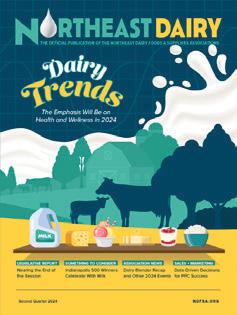

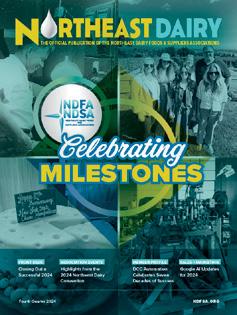

BY ALEX WALSH, EXECUTIVE DIRECTOR
s the first quarter of the year comes to a close, the associations have been very active and engaged in a variety of ways. It’s been a busy, but promising and exciting, few months.
The staff and boards are excited and looking forward to what the next few months have in store. In this article, you will read a lot about opportunities, not just for the industry or the associations, but for you as a member as well.
Our best-in-class advocacy efforts are in full force in each and every state of the organization, as well as activity in Washington. You will read more about the associations’ policy and regulatory actions in the legislative update article. It’s important to note, however, how critical the efforts of the associations, the legislative committee, and engagement from members are when it comes to providing the dairy industry’s voice and carrying out our messages to policymakers.
Back in March, we held the fifth annual Dairy Blender in Rochester, New York. It was a fantastic turnout of processors, manufacturers, and suppliers to learn from the presentations given by Cayuga Milk Ingredients, Saputo, and Yancey’s Fancy. This event — which morphed out of COVID — has been a way to bring plant tours to the people. As 120 attendees listened to the products they produce, future plans and goals, and what they look for from suppliers, it continued to prove to be a valuable event in our event portfolio. Thank you, again, to all of the members who came out, our presenters, sponsors, and the staff for making this year’s Blender another huge success.
Be sure to mark your calendars for:
• June 5: Dairy Day at the New York State Capitol
A great opportunity for processors and manufacturers to engage with state legislators and policymakers, celebrate the prominence of the dairy industry, and hand out samples.
• July 9: Bruce Krupke Memorial Golf Tournament and Clambake
Enjoy a morning of golf, followed by an afternoon of all-you-can-eat-and-drink fare, surrounded by more than 900 of your friends in the industry.
• Sept. 17-19: Northeast Dairy Conference
A mixture of business, networking, and fun. With a range of presentations from speakers on various topics impacting the industry, exhibit booths, relationship building, golf, and enjoyment, this is a worthwhile and valuable event you won’t want to miss.
Registrations are open, and details of these events are posted on the associations’ website.
The associations will also be awarding $20,000 in scholarships again this year. The deadline to apply is June 1, and more details and application information are available on our website. This is another valuable benefit of being a member of the association!
Speaking of the association’s benefits, depending on what your company does — whether you’re a processor, manufacturer, distributor, or supplier — companies join for various goals and purposes. No matter what yours are, the association is here to assist you with achieving those goals, improving your operations, and expanding your business. Let’s take a look at some of the benefits and ensure you are taking full advantage of what the NDFSA has to offer:
Advocacy – The NDFSA is your watchdog and your advocate. We are on the front lines fighting against proposals that impede progress and growth, driving policies that support dairy products, and monitoring issues on the horizon.
Cost-savings programs – Not all members, especially processors or manufacturers, join solely for the associations’ lobbying capabilities. Some may be start-ups, newer in business, or smaller and don’t have the resources, and turn to the
NDFSA for ways to alleviate time and/or capital on human resources solutions, energy savings programs, insurance discounts, and more!
Educational platforms – We partner with various colleges, universities, trade schools, agencies, and career centers. Utilize these capabilities of the association to your benefit to attract and retain your workforce, advancement opportunities with access to certification programs and professional development courses, and the Cornell University Boot Camps giving students and adults courses highlighting careers in the industry that drive labor recruitment. Some of these are offered in person or virtually and also include association-hosted webinars.
Networking opportunities – The NDFSA’s event portfolio offers members enhanced engagement and relationship-building opportunities amongst industry leaders and professionals. Our events provide an excellent platform for you to open doors with new customers, make connections, and strengthen existing relationships. Additionally, you’re able to raise your profile at our events by being in atten-

is June 1!
For more information, and to apply, click here.
dance, as well as enhance brand visibility opportunities. Resources – Providing you and your company with resources and information that will increase efficiency and continually serve to improve your operations. These include the Membership Directory and Buyer’s Guide, which detail contact information and the scope of business, as well as industry news with our weekly newsletter and quarterly magazine, and economic analysis with access to dairy pricing information, market data, and forecasts to operate more effectively for the future. There are also action alerts informing you of updates on legislative and regulatory actions impacting the industry.
The benefits of being a member of the NDFSA are boundless. We have seen some historical and monumental announcements coming from members about their growth and expansion that will be shaping the industry for years to come. The NDFSA is proud to partner with our members and assist in your growth and continued success. It’s an exciting time in the industry, in the Northeast, and for the associations, and we are enthusiastic about what the short- and long-term future holds.


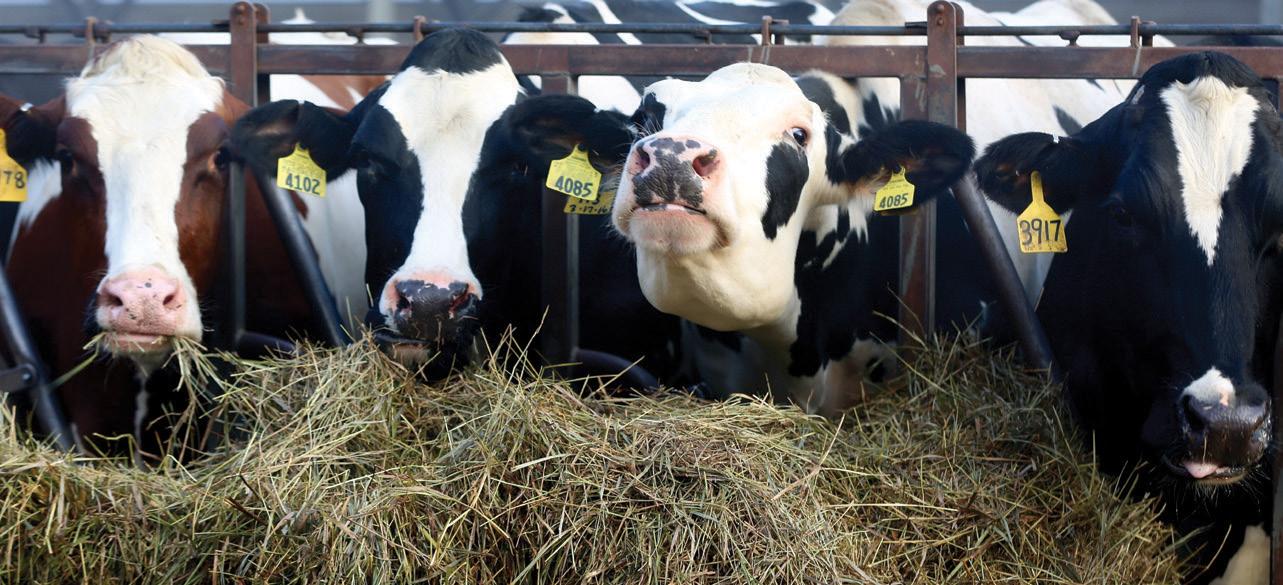
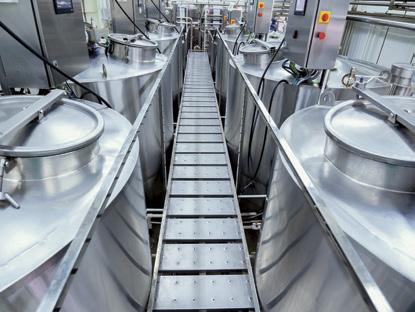



For this issue, we asked board members from the Northeast Dairy Foods Association and the Northeast Dairy Suppliers Association the following question: Are there trends you are seeing that consumers are gravitating towards that will have an effect on the dairy and/or food and beverage industry?
This is what they said.
Editor’s note: These answers were edited for clarity.

Tony Nassar, Director of Dairy Procurement, Chobani
More protein and less sugar are the asks from consumers. Ultra-filtered milk is in more demand from processors.
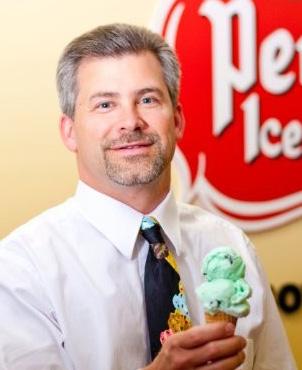
In the ice cream segment, we are seeing consumers continuing to spend more on feature flavors, which are crafty, unique flavors that may or may not become future everyday flavors. It’s always fun experimenting with new flavors, but there are certain flavors that aren’t meant to be an ice cream flavor. For example, several years ago, we worked on a hot Buffalo wing ice cream. Let’s just say it would be best to order a dozen wings from your favorite pizzeria or restaurant.
Novelties continue to show strong growth due to their convenience and portion control. We installed a new extruded stick novelty line last year to take advantage of this trend, offering premium and super-premium Perry’s branded bars in four and six count retail packs. We are also co-manufacturing for two national super premium brands and looking to add several others later this year and in 2026.
Consumers are asking more and more sustainability questions, which include eco-friendly packaging and carbon-neu-
tral production. The ethical sourcing of ingredients and the current focus on artificial colors are questions being asked. Lastly, more and more ice cream brands can be bought online, including Perry’s, for those friends and family members that moved away and miss hometown favorites. Or it’s a way for ice cream connoisseurs to try ice creams that they read about on social media but can’t find at their local stores.

Bucklin, Sales Manager, Smurfit Westrock
Consumers look for health and nutrition benefits while mindful of their budget. Some look for trends, even in dairy. Lactose-free product growth has been strong for years now with no sign of slowing. Greek yogurt demand plateaued many years ago, so marketers must find new ways to maintain demand. Packaging, both labeling and container size, can be one tool to achieve this.

Paul Knoerl, Packaging Equipment Specialist, Pactiv Evergreen
Over the past 10 years, consumers have been trending towards a preference for dairy products and beverages with enhanced nutritional and health benefits. Many of the dairy and plant-based products introduced in this time frame have promoted reduced calories/carbohydrates, pro-
biotics, reduced sugars/sweeteners, zero lactose, as well as increased protein and vitamins. Higher energy drinks have seen considerable growth amongst some generations of consumers.
The success of fairlife milk with increased protein levels and reduced sugar with zero lactose has been a primary leader in promoting these increased health benefits of milk to consumers. Other brands, for example A2, and regional dairy companies have followed suit with similar offerings and differentiated product lines.
One can see similar patterns in new products from ice cream and yogurt manufacturers to address consumers' desire for healthier products with nutritional advantages.
Cost concerns have increased substantially with consumers due to the inflation experienced post-COVID. Consumers are looking for more value and lower prices to help with their increased weekly grocery bills. We are beginning to see a trend by dairy product producers to consider downsizing package sizes to address this concern and achieve a lower price point for their customers.

Rick Wadhams, Owner, Wadhams Enterprises
From where we stand in the hauling/trucking business, I’m not sure what the consumer trends are other than I feel they are looking for the best prices but still want the dairy products that lead to a healthy diet. That’s more from a personal observation from my family.
On a different subject, a trend we see is that many of the larger farms and milk producers are in growth mode, building barns and adding milk cows. This may partly be because of the new fairlife plant being built right now in Rochester (Greece), which will take in huge volumes of milk, and now it has just been announced that Chobani is building a huge yogurt plant in Rome, New York.



BY ALEX WALSH, EXECUTIVE DIRECTOR
To no surprise, the first few months of the legislative sessions — both at the state and federal levels — have been stressful and entertaining, to say the least.
What we’ve seen is a consistently tumultuous political landscape. The dramatic shift in policies, regulations, and practices in the Trump administration from the Biden administration transition alone, not to mention the trickle-down effect, has caused waves throughout the food and agriculture sectors all along the supply chain — from farmers, processors, suppliers, and retailers to the consumers. This is all occurring in the midst of ongoing inflation challenges. While uncertainty and constant evolution on issues remain, the agility and resiliency of, especially that of dairy processors and manufacturers, remain strong, with the determination to find resolutions.
There certainly is no shortage of pending regulatory changes, proposed bills, and issues to discuss, but in this article, we will highlight a few, with the annotation that by the time of publication, things could be completely different.
For starters, while the U.S. Food and Drug Administration (FDA) has deemed certified artificial colors safe (also commonly known as GRAS, generally recognized as safe) when used in accordance with FDA regulations, the Trump administration, led by Health and Human Services Secretary Robert Kennedy Jr., is considering phasing out the use of certain certified artificial colors in foods manufactured and sold in the United States. At the same time, five states — Arizona, California, Utah, Virginia, and West Virginia — have passed laws banning the use of certified artificial colors in foods sold to schools and, in some states, all foods sold in the states. These lists also continue to grow.
The main goal of the Healthy Dairy in Schools Commitment is to ensure the public, especially parents,
policymakers, and lawmakers, continues to view dairy as a healthy, nutritious, and wholesome food option for America’s students, while a secondary goal is to ensure there is no disruption to the marketing or availability of nutritious dairy foods sold to schools, even as states impose new standards on certified artificial colors. On the flip side, there has been a reinvigorated push for whole milk back in schools, which seems to have promising momentum. This would not only be welcoming news for the dairy industry, as many members supply milk for schools, but also for the industry as a whole as we continue to combat misconceptions.
Similarly, as the federal administration continues to make sweeping changes when it comes to food policy and regulations, states are countering or expanding those proposals with their own, for example on SNAP benefits.
Most states with Make America Healthy Again (MAHA)aligned bills do include specific language ensuring milk and milk-containing products are exempt from restrictions, but some states, including New York, do not specifically exempt dairy. A bill in the New York assembly, A4416, creates a list of “healthy and nutritious foods and beverages” (including but not limited to milk and cheese). This list “shall not include foods and beverages with significant amounts of added sugar, artificial sweeteners, or sodium…,” which would likely target ice cream. The associations have been very active with legislators on these bills and making progress when it comes to educating lawmakers and slowing or even completely stopping the movement of these bills.
At the same time, Extended Producer Responsibility (EPR) bills continue to rise up and spin heads with their complexities. In New York, a second “industry-friendly” version of EPR has been introduced. Maine and New Jersey are also considering proposed legislation on this issue. The sentiment behind EPR in the dairy industry has evolved over
As we look to the last half (for most states) of the legislative session, rest assured that the Northeast Dairy Foods & Suppliers Associations are laser-focused on issues impacting our members and the industry. You can expect the annual last-minute changes, fanfare, drama, political negotiations, and stress to increase as we approach the recess. Nevertheless, the NDFSA remains your steady voice and advocate on your behalf.
the last few years as well. Since its conception in around 2018 or 2019, the philosophy of EPR has shifted from basically vehemently opposed to an acceptance that these regulations are coming; let’s find a workable solution for all stakeholders involved. Because this is, and is going to be, a monumental issue impacting the dairy industry, consumers, and many other industries for years to come, it’s important to spend some time on this.
The new version in New York, known as the Affordable Waste Reduction Act, S5062/A6191, is sponsored by Senator Monica Martinez and Assemblymember Chantel Jackson, respectively. It provides a more comprehensive and collaborative framework for waste reduction similar to Minnesota’s Packaging Waste and Cost Reduction Act. Both laws set targets for waste reduction, recycling rates, and the incorporation of post-consumer recycled content, aiming to drive continuous improvement in packaging sustainability. S5062 establishes PRROs and an inclusive advisory board that ensures multiple stakeholders, including businesses, municipalities, and environmental groups, have a voice in the decision-making process. S5062/A6191 also takes a broader approach to waste reduction, not just focusing on packaging but addressing waste management holistically.
The funding mechanism in S5062 is more equitable, ensuring that all parties in the supply chain contribute fairly without disproportionately impacting businesses or consumers.
1. Compliance dates and performance standards must be reasonable, achievable, and informed by a third-party needs assessment. For S1464/A1749 to even be achievable, dairy and food processors and manufacturing companies will need a longer runway for compliance and implementation. This legislation establishes several source reduction, minimum post-consumer recycled content, and recycling rate targets, yet none of these targets are based on a needs assessment or facts on what progress in New York can realistically be made and when. By setting such aggressive targets, our organizations are very concerned that compliance with this legislation would ultimately be unachievable, placing our members in an untenable situation.
• S5062/A6191 takes a different approach, and we recommend that New York conduct a robust needs assessment and rates study prior to setting any mandatory performance goals. We also recommend that New York look to Colorado to understand the important role of a needs assessment.
2. The definition of “producer” is confusing and will make it challenging for our members to determine whether they have compliance obligations. The dairy processing industry has a complex supply and manufacturing chain well beyond the brand names consumers see at the store. The dairy processing industry has a strong co-manufacturing and private-label business, complex business-to-business operations, and imports. Over the last year, it has been challenging for our members to determine their legal obligations in states such as Oregon, Colorado, and California.
• S5062/A6191, however, is based on the Minnesota EPR law, which was informed by the manufacturing industry and therefore more clearly spells out legal obligations.
3. Shifting landfilling disposal costs to producers leads to more landfilling, not more recycling. The NDFSA and IDFA are not aware of any other jurisdictions that require food companies to reimburse municipalities for the disposal of packaging materials. Under S1464/A1749, we are concerned that producers would be funding the cheapest and easiest materials management option instead of funding recycling innovation and capacity, leading only to more landfilling. Our members want their fees to fund recycling and its infrastructure, not more landfilling.
• S5062/A6191 does not reimburse landfilling. To be successful, EPR must function to share costs between producers and local governments fairly and reasonably. EPR is a multistakeholder endeavor and not just a funding mechanism.
4. The legislation’s source reduction targets are not realistic and do not sufficiently consider a company’s recent source reduction achievements. Our members support
source reduction as a method to reduce packaging waste, lower costs, and improve sustainability outcomes. For this reason, dairy companies have been proactively working with packaging suppliers and investing in technology to maintain food safety and product quality while reducing packaging weight and other source reduction strategies for many years. S1464/A1749, however, imposes arbitrary source reduction targets and deadlines, none of which are based on a needs assessment for individual materials. The source reduction waiver provisions to consider efforts within the last 2-5 years are helpful but still a burdensome annual waiver that misses source reduction achievements that many companies began in the last decade. Furthermore, producers’ options are limited since producers cannot fulfill the requirement by switching to a non-plastic material.
• S5062/A6191 takes a different approach, benchmarking source reductions in a needs assessment and basing performance measures on the real needs and capabilities of New York.
5. The legislation does not consider the food safety and food quality needs of packaging. S1464/A1749 does not consider further source reduction or other mandates that cannot be fulfilled because of food safety and quality reasons. The bill’s exemption for conflicts with federal law is too vague and requires a conflict as opposed to a technological and economic barrier. Food safety and quality are of paramount importance to the dairy industry, particularly for fresh and Grade “A” dairy products that are highly regulated by the FDA and the NYS Department of Agriculture and Markets.
• S5062/A6191 avoids these concerns by allowing the PRRO to set a base source reduction target using a needs assessment.
6. Federal agencies are the proper regulators for food packaging materials. Our organizations understand the legislature’s desire to remove PFAS from the environment and food packaging, and our members share that goal. However, the EPA and FDA are taking the lead on a national PFAS policy, and we respectfully ask New York to let those agencies do their statutorily mandated jobs. The FDA is acting on PFAS in food contact materials.
We are also concerned that New York continues to describe PFAS in terms of “intentionally” or “unintentionally added,” as opposed to what is controllable. Those are not terms used by federal regulators or scientists in this area of chemical contaminants, complicating FDA-required good manufacturing
processes and chemistry requirements for food contact materials. There are also concerns about how any company could certify that packaging lacked unintentionally added PFAS, because while the FDA has a packaging testing method, it is not yet validated. Finally, from a policy perspective, we do not believe that adding a PFAS ban is related to expanding and improving recycling systems.
• We suggest that New York defer to the EPA and FDA on chemicals, as they should be considered separately from S1464/A1749, recycling, and EPR.
• We also request the removal of provisions requiring producers to reimburse municipalities for disposal and landfilling activities in favor of fair and equitable allocation of costs between these entities.
7. This legislation will place New York’s dairy processing companies doing business in multiple states at a competitive disadvantage. Many of our New York-based members conduct business operations in multiple states bordering New York and throughout the country. Through the enactment of S1464/A1749, conducting business in neighboring states would significantly increase the cost of business and place dairy products produced in New York at a significant competitive disadvantage. Many dairy brands manufactured in New York also compete in the national marketplace, and costs associated with this legislation would hurt New York dairy producers, processors, and manufacturers, not only regionally but also nationally. Moreover, requiring food and beverage manufacturers to absorb additional costs would unnecessarily place additional risk on businesses that are already struggling to compete with other present economic factors, such as historic levels of inflation and pending tariff implications, resulting in an increase in food and beverage prices.
S1464/A1749 goes beyond these other states without considering the lessons those state regulators are already learning about the challenges in designing a workable EPR program. Our members share the goals of an efficient and stakeholder-driven EPR system, but New York is moving in a direction with S1464/A1749 that will ultimately not lead to an improved recycling program. Many industries are supporting producer-driven bills in Washington and Minnesota. We urge legislators to examine the other laws and implementation issues to develop a program that bridges lessons learned in other states.
Other regulatory change proposals that have been increasing at the state levels this legislative session include taxes on sugary beverages (which in some instances include milk), as
well as what seems to be an increasing push to allow for the loosening of restrictions around the sale of raw milk. The associations have been vocal and opposed to these proposals wherever they arise.
As a prime example of non-industry-specific policy changes that are more business-focused that the associations monitor is the expansion of Vermont’s unpaid family and medical leave law. The bill would:
• Broaden the definition of family to include domestic partners, grandparents, grandchildren, siblings, and others with close family-like relationships.
• Add job-protected bereavement leave.
• Add protections for employees dealing with the impacts of domestic violence or sexual assault.
• Expand parental leave to cover miscarriage recovery and foster care placements.
• Add new leave protections for employees with family members in active military service.
For our members in Vermont, we are closely monitoring and engaged. And, to bring this full circle, while it may be a general business policy, we all know that the dairy industry is
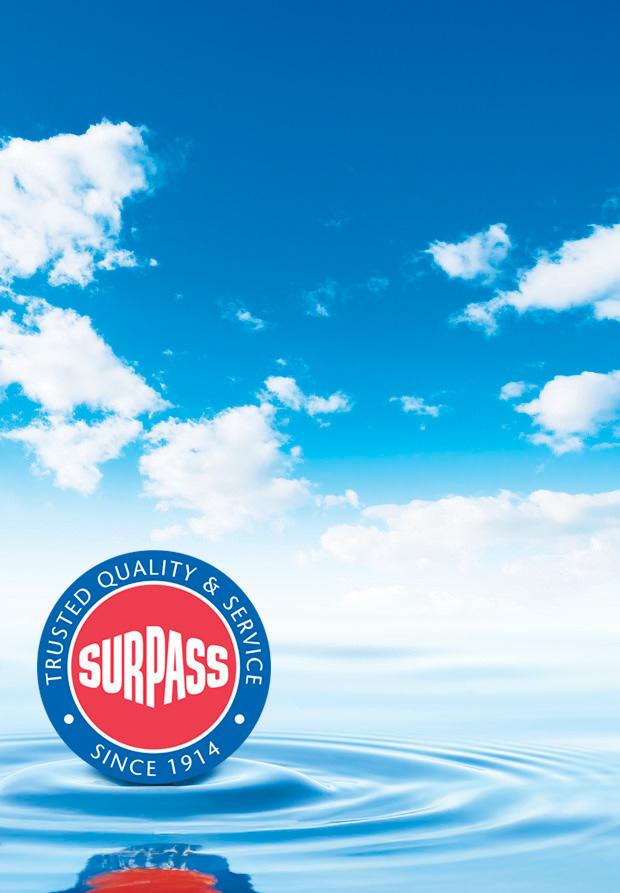
not your “general business,” with producers, processors, and manufacturers operating seven days a week, 365 days a year, around the clock. These are the types of proposals that could have greater impacts on other types of businesses, resulting in further labor challenges.
As we look to the last half (for most states) of the legislative session, rest assured that the Northeast Dairy Foods & Suppliers Associations are laser-focused on issues impacting our members and the industry. You can expect the annual last-minute changes, fanfare, drama, political negotiations, and stress to increase as we approach the recess. Nevertheless, the NDFSA remains your steady voice and advocate on your behalf.





BY GARY LATTA
New York and the rest of the Northeast are fast becoming a dairy juggernaut. With the recent announcement of Chobani’s $1.2 billion investment for a new yogurt plant in Rome, New York, the wonderful news keeps pouring in.
There are several large plant investments being made across the country. Many of these are new construction, and others are expansions of existing facilities. Several large cheese plants are coming online in the Southwest, while the upper Midwest has some smaller projects going on that are also cheese-related. Most dairy manufacturing facilities are constantly upgrading and making investments of some sort. It is an ongoing process. The future is both a wonderful opportunity and a challenge for U.S. dairy producers and manufacturers.
On April 22, Governor Kathy Hochul, Chobani Founder and CEO Hamdi Ulukaya, along with government and dairy industry leaders, met at Rome’s Griffiss Business and Technology Park to celebrate the announcement. The new Chobani
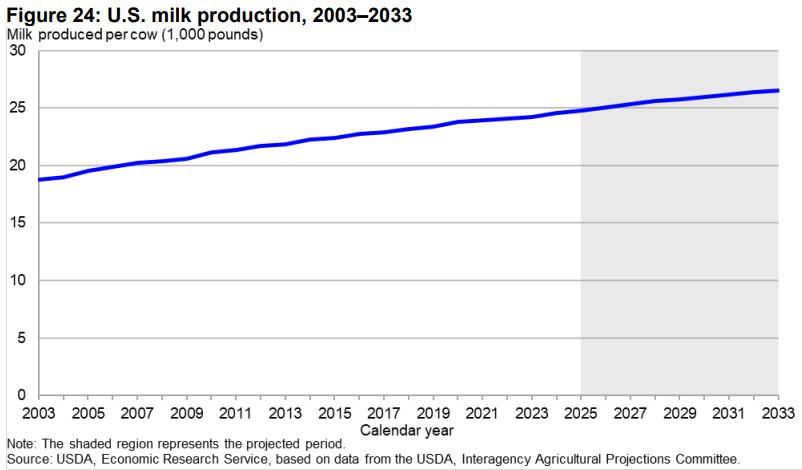
facility will be 1.4 million square feet and add an additional 1,000 new jobs to the company’s existing nearly 1,000 employees in New York. The new plant is expected to process at least 12 million pounds of milk per day. Chobani joins several other major dairy players that have announced new facilities and expansions in the Northeast.
In April of 2024, fairlife, the Coca-Cola Company, and Governor Hochul announced their new $650 million, 745,000-square-foot facility in Webster, New York. Fairlife will produce its ultrafiltered milk with less sugar, more protein, and longer shelf-life products in the new plant, which is expected to create 250 new jobs in the area. The new facility is expected to be operational near the end of 2025.
In 2022, Great Lakes Cheese broke ground on their new 486,000-square-foot manufacturing and packaging plant on a 200-acre site in Franklinville, New York. The new $700 + million plant will replace Great Lakes Cheese’s Cuba plant just south of Franklinville and will process at least 1.42 billion pounds of milk annually.

The new facility became operational in early 2024 and is expected to employ at least 500 people, nearly doubling the number that worked at the Cuba facility.
In January 2025, Byrne Dairy announced a $120 million expansion to its dairy manufacturing facility in Cortlandville, New York, that will create an estimated 250 new jobs. The expansion will add 26,000 square feet of new production area and three new stainless-steel silos. In recent years, Byrne has been busy with several additions and upgrades to its extended shelf-life and aseptic plant operations in DeWitt, New York, near Syracuse. In September of 2024, Byrne revealed its new Innovation Center located next to the DeWitt facility to be used for product development, shelf-life testing, sensory evaluation, analytical testing, and other services.
Hood purchased its Batavia, New York, extended shelf life facility from Dairy Farmers of America (DFA) in July of 2017. DFA had acquired the plant from Muller Quaker in December of 2015. Hood owns the Lactaid brand and made several
sizable investments and expansions at the facility, which is at least 460,000 square feet and employs about 450 people. Hood owns and operates 12 manufacturing facilities throughout the U.S. Most of its operations are in the Northeast, where its packages fluid milk, cream, cottage cheese, ice cream, sour cream, and more. In 2024, the Batavia facility was named Dairy Foods Plant of the Year. In total, HP Hood employs approximately 3,400 people.
In 2023, Wells Enterprises (Wells) announced a $425 million expansion to its Dunkirk, New York, ice cream and novelties manufacturing facility. Wells plans to add 270 new jobs to its existing 380 full-time jobs for a total of 650 employees at this one location. A chocolate manufacturing operation will be housed inside the facility. The new production capabilities will increase output over four times to support the company’s growth in novelty and packaged ice cream. The expanded facility is expected to be operational by late 2025.
Wells is headquartered in Le Mars, Iowa, with manufacturing plants in Le




















Mars; Henderson, Nevada; and Dunkirk, New York. It manufactures more than 200 million gallons of ice cream per year with sales in all 50 states. In total, the company employs more than 4,000 people in multiple manufacturing plants for its Blue Bunny, Halo Top, Bomb Pop, and Blue Ribbon Classics brands.
Cayuga Milk Ingredients (CMI) in Auburn, New York, was founded in 2014 and utilizes the milk supplied by 32 family-owned farms in the surrounding region. CMI recently announced a $150 million, 130,000-square-foot facility expansion plan to include a new aseptic processor and bottling and packaging lines that will produce finished products for the extended shelf-life beverage market. Other improvements are planned for wastewater treatment, stormwater retention, parking, and utility upgrades. The expansion of bottling lines and improvements to its milk receiving bays will increase plant capacity to 150,000 gallons per day. CMI estimates the new upgrades will add 100 full-time positions to its existing 70 employees.
In mid-2020, BelGioioso Cheese built a new $25 million, 100,000-square-foot cheese manufacturing plant in Glenville, New York. In 2011, BelGioioso acquired the Cappiello cheese plant in nearby Schenectady. The new Glenville plant expanded production capability, adding 50 jobs and retaining 31 existing jobs. BelGioioso operates nine plants in the U.S. and manufactures specialty Italian cheeses from local dairies.
Lactalis USA is always busy with expansions and upgrades to its facilities across the country. In January 2025, Lactalis opened their $2 million Culinary & Sensory Institute in Buffalo, New York. The facility is designed to help expand its culinary expertise and has both residential and commercial kitchens where food professionals work on the latest food trends. Recently it was reported that Lactalis will spend $5 million to replace a battery charging area at its Buffalo cheese facility to build a new and bigger one. They also plan to build a new engine room.
In 2023 Lactalis announced that it would invest $32 million to expand the Buffalo facility, increasing its production of whey. The project will add 6,600 square feet for a new evaporator and a 4,000-square-foot building for new electrical equipment. The Buffalo plant produces 280 million pounds of dairy products annually. Other Lactalis U.S. locations include California, Arizona, Idaho, Wisconsin, Vermont, and New Hampshire. Lactalis Buffalo employs approximately 684 people. About 97% of the milk at the Buffalo plant comes from New York dairy farms.
In June of 2023, Agri-Mark Inc., a leading dairy farm
cooperative in the northeast, completed a $30 million expansion of the McCadam cheese plant in Chateaugay, New York. The project added 9,600 square feet to their existing 110,000-square-foot manufacturing facility.
DFA owns 46 plants across the nation, with nine of them located in the Northeast. DFA not only supplies farm milk to its own plants but is a major supplier to many dairy companies in the Northeast. DFA and other northeast cooperatives play a critical role in balancing milk supplies.
In March of 2024, the Maryland and Virginia Milk Producers Cooperative, with farmers and dairy processing facilities in 11 states, purchased Hood’s extended shelf-life ultra-high temperature dairy processing plant in Philadelphia. The new owners plan to double plant capacity from 10 million gallons to 25 million gallons by 2026.
The USDA-ERS, and its projection committee consisting of 10 agencies, released the latest Long-Term Agricultural Projections to 2033 in February 2025. The image displayed on page one of this paper shows that the USDA is optimistic for steady milk production growth to 2033. Their assumptions are as follows:
• Milk production is projected to rise at a compound annual growth rate (CAGR) of 1.1% per year to 253.6 billion pounds in 2033.
• Feed prices are expected to decline from the high values of recent years through the middle of the projection period but increase thereafter at a steady pace.
• Following the low margins experienced through most of 2023, and their lagged impact on the milking herd, the national dairy herd is projected to decline though 2025, but then start rising in 2026.
• As domestic demand for dairy products grows and exports increase, milk prices are expected to rise relative to input prices, supporting dairy herd expansion.
• Technological and genetic advances will contribute to increasing cow milk yields as well as the milk fat and skim-solids (protein, lactose, and minerals) content of the milk.
• In 2033, annual milk production per cow is projected to average 26,540 pounds.
The following developments are projected for the U.S. dairy sector:
• Domestic use on a milk fat, milk-equivalent basis is projected to increase by a CAGR of 1.1% over the projection period. On a skim-solids basis, domestic use is projected to increase at a modest CAGR of 0.7% from 2025 to 2033.
• Demand for cheese is expected to rise based on increas-
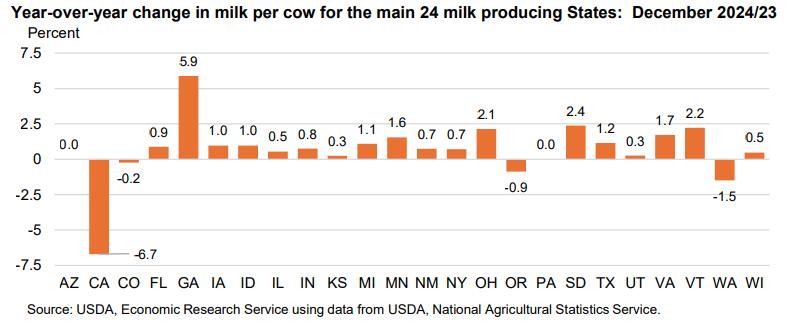
ing consumption of food eaten away from home and rising consumer incomes. Butter demand is also expected to expand. However, the decline in per capita consumption of fluid milk products is expected to continue.
• Global demand for U.S. dairy products is expected to continue to rise over the projection period, especially for products with high skim-solids content, such as dry skim milk products (nonfat dry milk and skim milk powder), whey products, and lactose. On a skim-solids basis, dairy exports are expected to grow from 23.0% of 2024 milk production to 25.5% of 2033 milk production. However, on a milk-fat basis, exports are expected to decline and remain comparatively low, projected at 3.9% of 2033 milk production, down from 5.2% of the projected 2024 milk production.
• The nominal all-milk price is projected to trend upward over the projection period. However, it is not projected to reach the 2022 record high.
The U.S. remains competitive with most dairy exports internationally. Some observers are concerned that if international dairy prices get weaker, they will become more competitive with the U.S. export price and dampen our sales. U.S. prices for now, especially cheddar cheese, are attractive globally.
Source: Weekly Dairy Outlook, Prof. Normand St-Pierre Ohio State University



U.S. consumers cannot get enough butter. Butterfat yields at the farm continue climbing, and a record 2.2 billion pounds were produced last year. The U.S. keeps importing more butter every year, and we saw 173 million pounds of it in 2024. Much of this is boutique-style butter used by pastry chefs and bakers, coming in from Ireland and known for its slightly higher butterfat content. U.S. dairy now exports about 17% of its milk production, an amount that is climbing each year. The industry is genuinely concerned about tariffs, immigration labor, and highly pathogenic avian influenza (HPAI), or “bird flu.” Several reports point to HPAI as a key reason some large dairy states like California are struggling with milk production.
The tariff situation has been changing and evolving each week at a dizzying pace. Most industry observers are cautious about making predictions as to how it all will end. Mexico and Canada are the two biggest export destinations for U.S. dairy products. The Trump administration has put a lot of pressure on Mexico regarding the border issues of illegal drugs and migrant crossings. The administration has also put pressure on Canada for numerous issues, including their dairy protectionist measures. So far, the U.S. has not been able to break into the Canadian dairy market as it would like to. Canadian dairy is protected politically but is feeling pressure from within from consumer and free market groups. What will come of USMCA? Will it be revised or replaced by something better? Is this a pivotal moment for US-Canadian dairy relations?
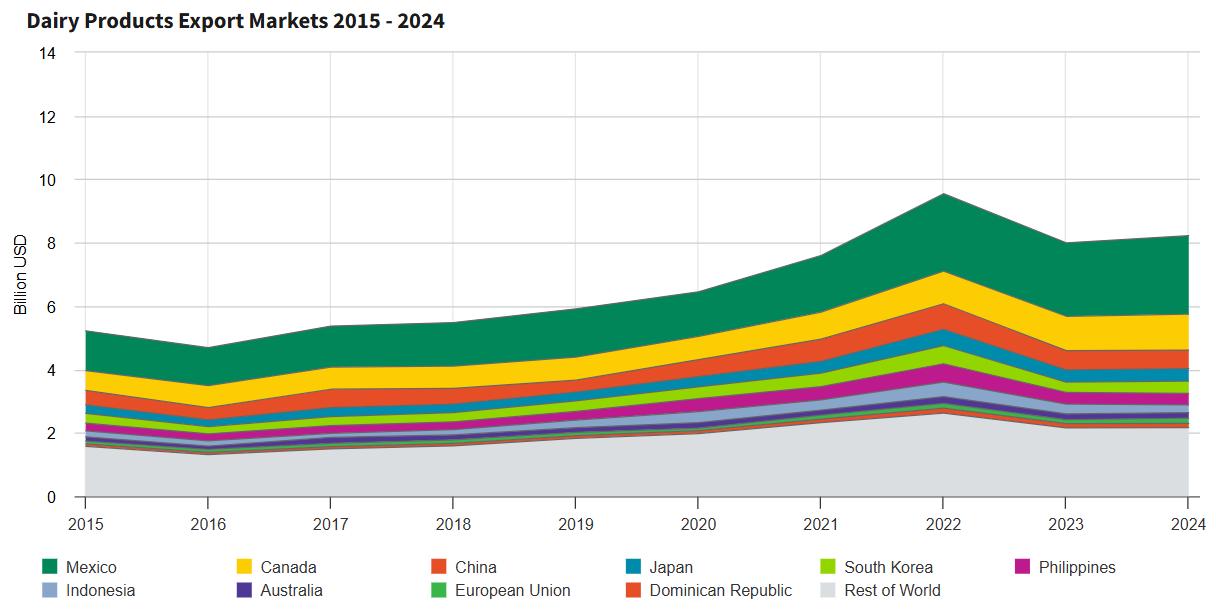
One thing is for certain: Agricultural imports and exports are important for Mexico, Canada and the United States. Mexico is the No. 1 export market for U.S. dairy and agriculture. In 2024, U.S. dairy exports totaled 757,081 metric tons valued at $2.47 billion. The 10-year average value is $1.71 billion, with 96% growth over the past decade. Mexico, Canada, and the European Union are the top three agricultural exporters to the U.S. These three are responsible for 60% of all agricultural sales to the U.S. between 2024. Mexico ships on average $41.6 billion a year, mostly horticultural products like fruit, vegetables, and alcoholic beverages. Canada ships $35.0 billion annually to the U.S., mostly processed products (baked goods), meat, vegetable oils, and some vegetables.


The British (UK) Agriculture and Horticulture Development Board (AHDB) recently did its own analysis of the tariff threat in their publication “ The impact of Trump's tariff announcements on the British dairy sector.”
The UK admits the tariffs are sending ripples through global markets. However, it does not export as much dairy to the U.S. as other countries…. like the EU collectively.

Susie Stannard writes, “Of other nations trade to the US, 57% of total dairy imports (based on average of 2022 to 2024) comes from the EU (with Ireland making up 17% of that alone), 16% comes from New Zealand, 10% from Mexico, 9% from Canada and other nations making up a small proportion. To contextualize, UK dairy imports make up only 3% of US dairy imports. On the face of it, that means that the UK has much less to lose than some other countries.”
The USDA’s National Agricultural Statistics Service (NASS) reported that 2024 annual milk production in the U.S. was down 0.2 % from 2023. From 2015, the U.S. annual total milk production has increased 8.3%. The
average annual milk production per cow has increased 8.1% from 2015, and the average annual number of milk cows has increased 0.2%.
A summary of all states’ 2024 annual milk production is found in the February 2025 issue of USDA Milk Production. All 50 states collectively showed a drop of 0.2% from the year 2023. Looking at the larger milk-producing states, we see a production change as follows:
A few large dairy states experienced a drop in annual milk production last year.
2024 % Change in Milk Production
Others are small but positive increases. Several of these states have been struggling with bird flu. Bird flu’s impact on dairy seems to be getting under control in many states. To view the latest CDC update with an excellent interactive map, visit H5 Bird Flu: Current Situation
The USDA’s latest forecast has 2025 milk production increasing to 226.9 (+0.7) billion pounds from higher cow numbers (+25,000) and improved output per cow (+10 pounds). Therefore, product price forecasts are adjusted lower
Milk Cows – United States: 2015-2024
per Cow – United States: 2015-2024
from last month, including cheddar cheese $1.790 (-2.0 cents), dry whey $0.510 (-1.50 cents), butter $2.445 (-7.0 cents), and nonfat dry milk (NDM) $1.22 (-3.5 cents).
With lower product price forecasts, the projection for Class III and IV milk prices are also revised downward from their previous estimates to $17.60 (-$0.35) and $18.20 (-$0.60) per hundredweight (cwt), respectively. The all-milk price forecast for 2025 is $21.10 per cwt, down $0.50 from the USDA’s previous month’s forecast.
• In 2025, overall food prices are anticipated to rise slightly faster than the historical average rate of growth.
• In 2025, prices for all food are predicted to increase by 3.5%.
• Food-at-home prices are predicted to increase by 3.2%.
• Food-away-from-home prices are predicted to increase by 3.8%.
Source: Food Price Outlook - Summary Findings, Updated: 4/25/2025
One of the most fascinating graphics is the annual map of U.S. per capita milk production by state. This, along with other images, is published annually by the Federal Central Milk Marketing Order. The per capita milk production map is revealing in that it shows the size of the milk supply compared to the number of citizens or consumers in that state.
Looking at the Northeast this way, it is interesting to compare the smaller, highly populated coastal milk-producing states with Vermont’s whopping 3,820 lbs. per capita. The percentage change in per capita milk production graphic reveals that over the past five years only New York increased supply relative to its population.
The Northeast is sometimes described as evenly balanced between the four classifications of milk utilization.

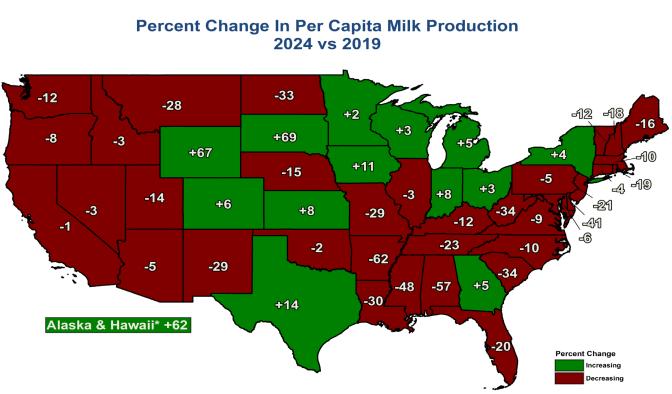
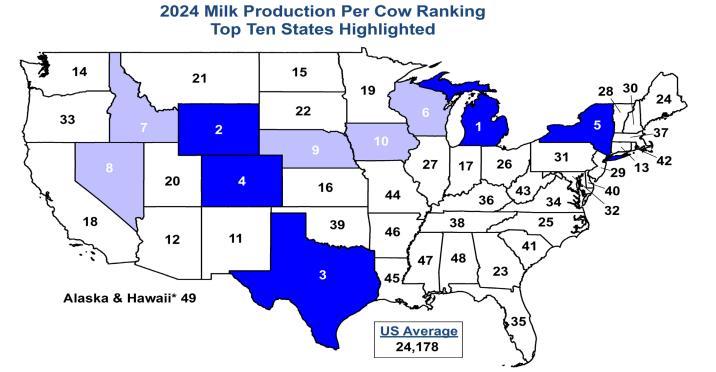

New York and Vermont have seen ICE enter dairy farms in recent weeks to investigate a single worker but end up taking others into custody during the process. President Trump has said on camera the U.S. needs to develop a plan where the serious undocumented agricultural worker can remain on the farm for a longer period of time. A program that is longer lasting than H-2A and more suited to dairy farms that need year-round workers. Congress has been floating the Farm Workforce Modernization Act, a bipartisan bill that passed the House on two occasions but stalled in the Senate.



Gary Latta is a dairy product specialist consultant for the Northeast Dairy Foods Association, Inc. He has more than 30 years of experience in providing economic analysis, statistics, and information to the dairy processing industry.

You asked for Quick Setup...
You asked for Better Visibility...
You asked for Increased Accessibility...
You asked for Repeatable Package Performance...
You asked for the same great Shelf Life Optimization features...
You asked for all of these benefits to be
Gable Top format. Now you have it!


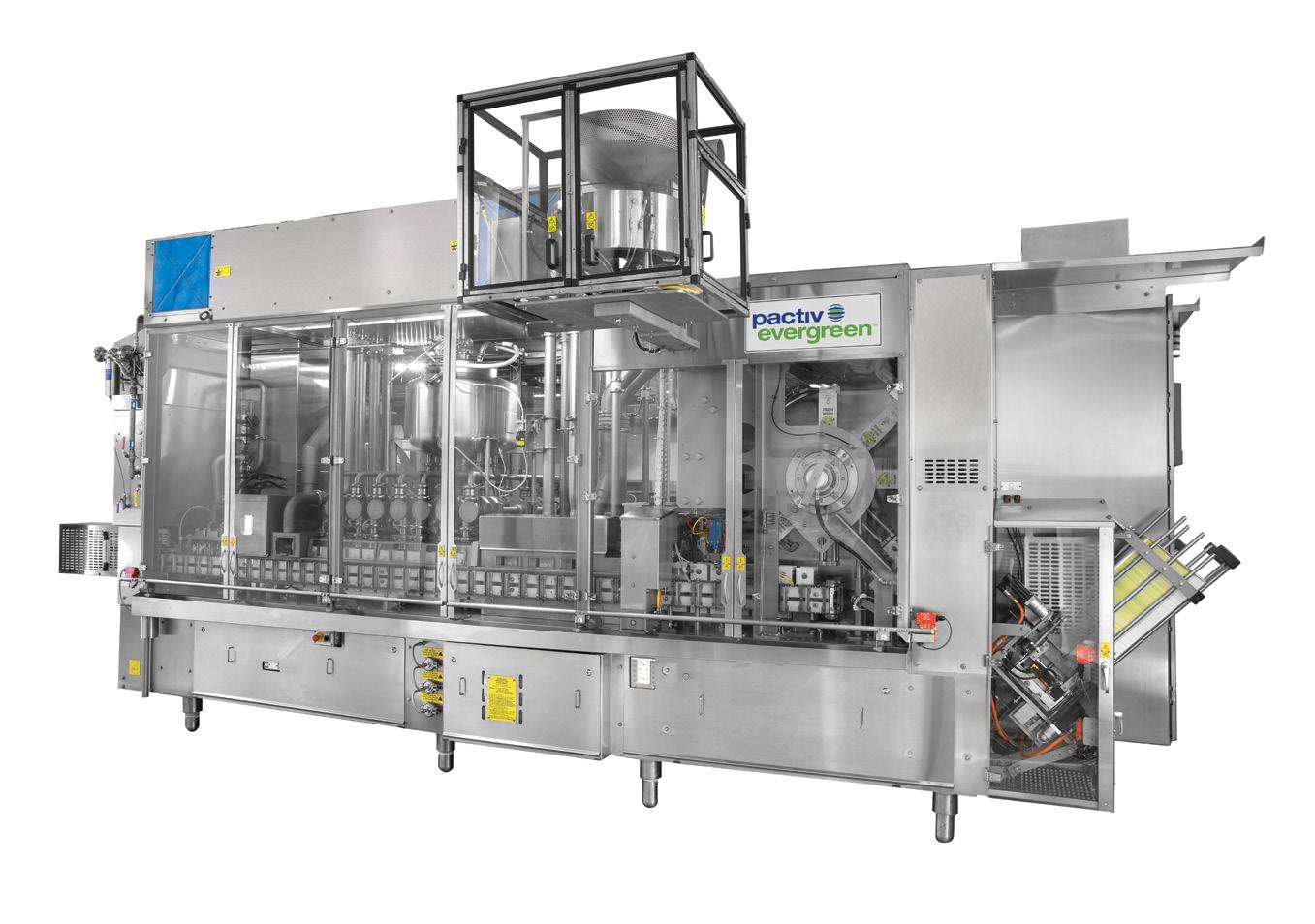

Limited-Time Dairy Products, Whole Milk Lead 2025 Industry Trends
EDairy Blender Recap — Plus Previews of the Upcoming Events
ach year for the Q2 issue, Northeast Dairy Magazine talks to Donna Berry (who covers new products and trends for the dairy industry) about what we can expect in the coming year.
Canastota Dairy Products Carries on a Century-Old Legacy
Limited-time products are once again expected to be “a very big business” in 2025.
“Formulators are getting a bit more creative with their concepts, and a lot of opposites are attracting when it comes to flavors,” said Berry. “We know the spicy movement, which
was sweet and spicy, but there are others, like sour and citrus. There are a lot of mashups and unexpected flavors. But what makes them attractive as limited-time offerings is that only a certain amount are made. When you see them in the store, even if they sound bizarre, you want to try them.”
How AI-Powered Tools Save Time, Boost Productivity
Products made with whole milk will also continue to perform well.
“There’s been some education that, especially with kids, they need the fat that’s in dairy,” said Berry. “I think dairy
processors across all categories are doing a much better job marketing the nutrient density of their products. And as we see a return to more minimally processed, simple food –direct from the farm, so to speak – dairy is really benefitting.”
Here are some other trends to watch out for in 2025:
“Retail volume sales for all dairy products in the United States increased in 2024,” said Berry. “While fluid milk was only an increase of 0.1%, which is something they normally wouldn’t even report, considering the fact that it has been decreasing for the last 30 or 40 years, that was big news.”
A big reason for that turnaround is consumers’ willingness to pay more for value-added products (i.e., grass-fed, organic, A2, higher protein, and omega-3 fortified milk).
There has been a lot of activity with lactose-free products, in particular, across all dairy categories, “but they’re really fueling the sales in fluid milk,” said Berry. “Lactose, and sensitivity to lactose, was the main driver of consumers leaving dairy.”
To meet the growing demand, Dairy Farmers of America launched two new products. The first, Milk50 by DairyPure, is a low-sugar, low-calorie milk that comes in three flavors: original, chocolate, and vanilla. TruMoo Zero Whole Chocolate Milk followed two months later, offering consumers a high-protein alternative to traditional chocolate
milk (without any added sugar). And, of course, both products are lactose-free.
The biggest volume growth, however, belonged to cottage cheese.
“It’s the original high-protein dairy product,” said Berry. “It’s gotten so much traction on social media, and it’s really taking off. But there hasn’t been much innovation in that space because they can’t even produce the basic product to keep orders filled. I do foresee down the road more products packaged similarly to yogurt, with a side container of muesli or nuts and fruits, and more variety in flavors.”
It has been the exact opposite in another category.
“Dips have been really impressive this past year with all the innovations,” said Berry. “Companies are really pushing the limits when it comes to bold flavors, the types of ingredients, and even mashups in that space. Sweet and savory dips are both very much trending.”
Some companies are incorporating meat in them, too. Good Foods Group, for example, rolled out a new line of 24-ounce dairy spreads and dips at the end of 2024, with flavors like Bacon Date Goat Cheese and Chicken Taco.
“A lot of these dips are coming out as limited-edition or seasonal,” said Berry. “There was a lot of activity around the [Big Game], no surprise. It will probably slow down a bit

One company embracing the limited-edition trend is Stewart’s Shops. It recently introduced its seasonal offerings:
• Boston Cream Dream
• Peanut Butter Caramel Chaos
• Stargazer
• Strawberry Shortcake
• Mango Dragon Fruit Sherbet There’s also a new flavor designed to let customers “relive [their] childhood nostalgia.” Dirt Cake is a vanilla pudding ice cream blended with a swirl of chocolate cookie crumbs and chunks of pound cake.
around the summer and come back at the holidays.”
A growing focus is being placed on making cheese more snackable and portable, yet when it comes to flavor innovation, “that’s never really been lacking in this space,” said Berry.
“I have seen the sweet and spicy cheeses getting a little hotter and getting more creative with flavors.”
Take Sargento, which partnered with McCormick to launch three new flavors of its seasoned shreds: Cholula Queso Quesadilla and Asadero with Hot Sauce Seasoning; Frank’s RedHot Cheddar, Colby Jack, and American with Cayenne Pepper Seasoning; and McCormick Mozzarella and Parmesan with Crushed Red Pepper.
Not much has changed in the butter space.
“I think what we’re seeing is not necessarily more innovation but making those flavored butters and premium butters more available,” said Berry. “Distribution has been gained by a lot of them, especially the higher-fat butters, like the European butters.”
That’s the case for Wyke Farms; the England-based company introduced its Ivy’s Reserve Salted Farmhouse Butter to the U.S. market earlier this year.
Berry said that pints and frozen novelties are taking up the most space in retail freezers right now.
“Consumers really like the size, even though it costs more on a per-ounce basis versus the big gallon,” she added. “They want better quality, more indulgence, and portion control.”
At the same time, fruits and nuts are becoming popular ingredients as consumers look for healthier options — and as cocoa prices hit an all-time high.
“Recent innovations haven’t really focused much on chocolate at all,” said Berry. “The base is seldom chocolate, and any chocolate bits and pieces that are in there, they’re making a little bit go a long way. As a result, fruit flavors have really taken off this year. And there’s the healthful halo of, ‘If I have some fruit in my ice cream and it’s made with real fruit, I can see the pieces, that gives me permission to indulge.’”
A trend from last year is also sticking around: nostalgic flavors.
“They provide a sense of comfort for some consumers,” said Berry.


Editor’s note: Thank you to Donna Berry for sharing her knowledge on this topic. You can read her blog at berryondairy.com
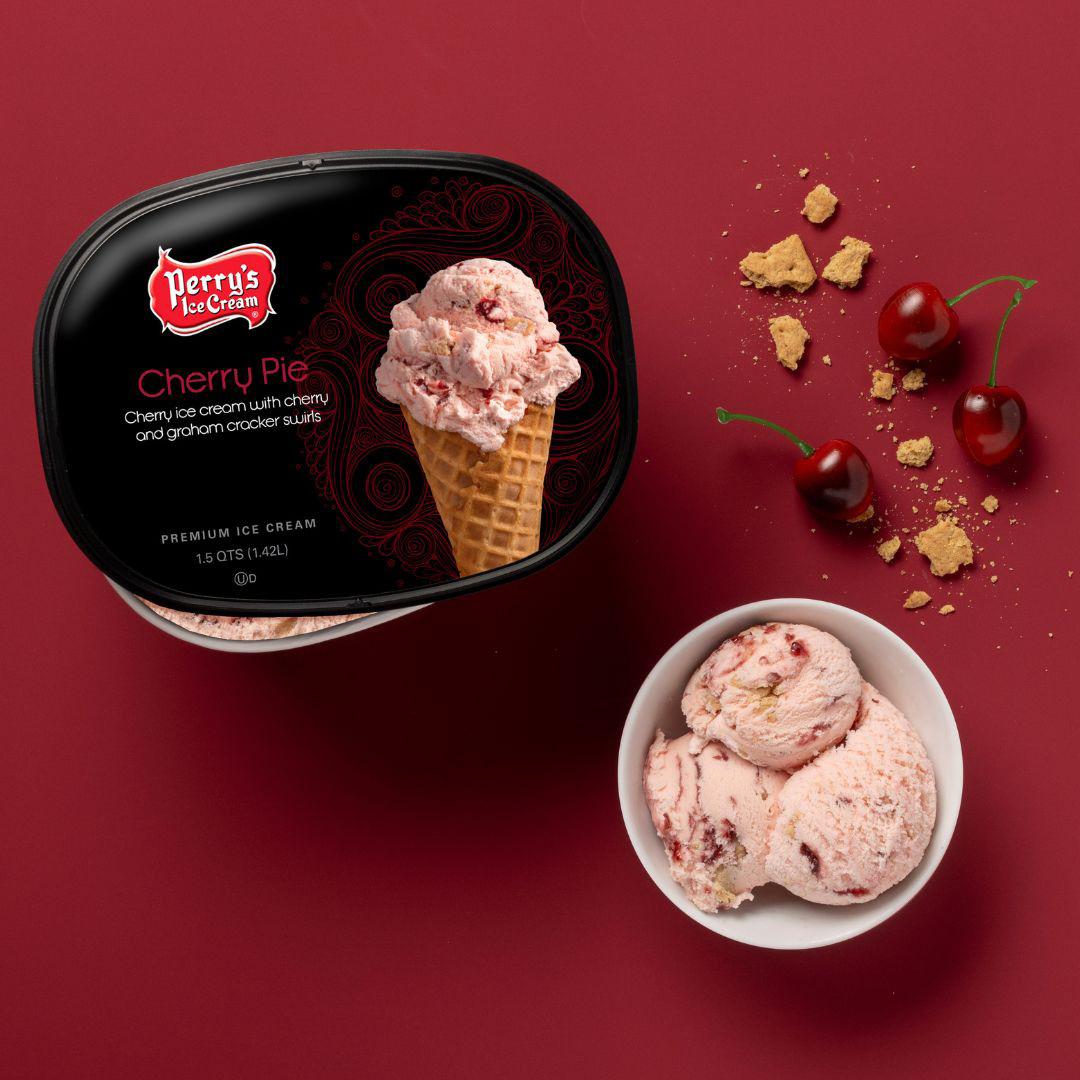

Perry’s Ice Cream is taking a trip down memory lane with the launch of its two newest flavors.
Cherry Pie blends cherry ice cream with cherries and graham cracker pieces, while Lemon Meringue Pie mixes lemon ice cream, meringue ice cream, and bits of pie crust.
“At Perry’s, we’re always looking for ways to innovate while staying true to the flavors our customers are seeking,” said Associate Product Manager Megan Mergler in a press release. “These new flavors were inspired by the comfort and familiarity of homemade pies, and we’re excited to share these unique creations with our fans.”


The U.S. Food and Drug Administration (FDA) is proposing to require a front-of-package (FOP) nutrition label on most packaged foods to provide accessible, at-a-glance information to help consumers quickly and easily identify how foods can be part of a healthy diet.
The proposed FOP nutrition label, referred to as the Nutrition Info box, would detail and interpret the relative amounts of three nutrients—saturated fat, sodium, and added sugars—in a serving of food and would appear on the package’s front so that it is immediately visible when a consumer is deciding whether to buy, use, or eat the food.
While calories would not be included in the Nutrition Info box, a manufacturer could voluntarily include a calorie statement






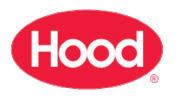



The next time you pick up one of Cabot Creamery’s eight-ounce cheese bars, you may notice a change in the material. The cooperative announced in June that it would begin using 30% post-consumer recycled (PCR) packaging.
The move is a result of a sustainable packaging study launched in 2022 and is expected to reduce greenhouse gas emissions and fuel consumption by as much as 25%.
“This is a pivotal moment in our journey to become a greener company, introducing one of the first cheeses in a post-consumer-recycled package,” said CEO David Lynn in a press release. “As the first dairy cooperative to achieve B-Corp status, we have a long-held commitment to sustainable practices, and this shift to PCR packaging in our 8-ounce bar line represents a major milestone in that commitment.”

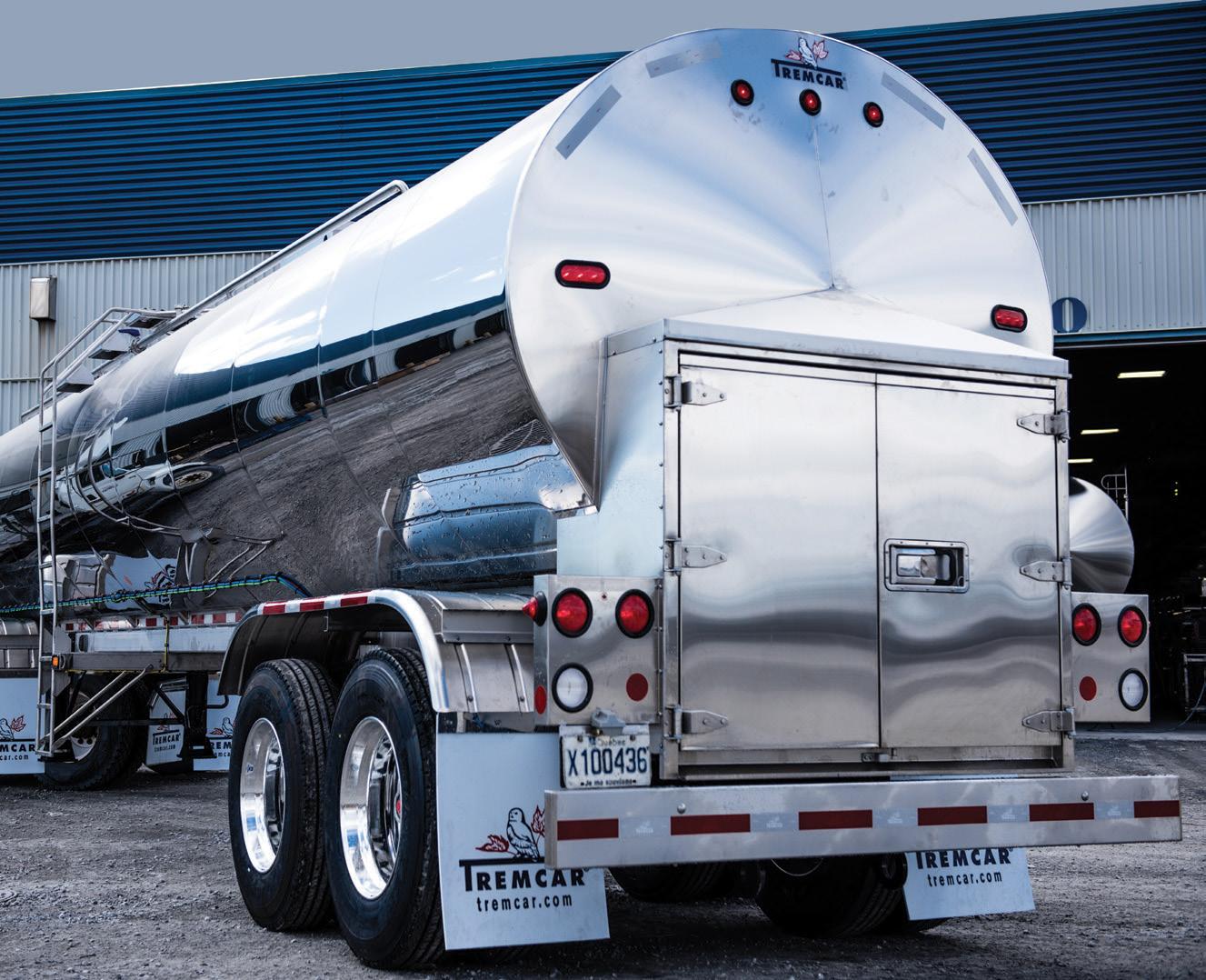













Cracker Barrel Cheese is changing the way we snack on game day.
In the days leading up to the Big Game in New Orleans, the company sent 50 AI-powered, refrigerated robots to locations around the city, distributing nearly 100,000 of its cheese sticks.
“Activating during the Big Game week was an absolute game-changer for Cracker Barrel Cheese,” said Brand Director Amanda Vaal in a press release. “We built relationships with nearly 100,000 devoted Cracker Barrel Cheese fans in an innovative and engaging way, and this showed us how Cracker Barrel Cheese is such an integral part of game day snacking. Seeing the fans’ reactions as they interacted with the robots and enjoyed our cheese was truly amazing.”



are you getting the dairy connection newsletter?
Our weekly email newsletter includes the latest industry news, as well as updates from the NDFSA members.
TWO ADVERTISING OPTIONS ARE AVAILABLE:
A spotlight ad (600x300) placed in the body of the newsletter, plus a logo and a 50-word description at the top.

A banner ad (600x150) placed in the body of the newsletter.
Contact your sales rep for more information.

dsm-firmenich, a global leader in nutrition, health, and sustainable innovation, announced ‘Milky Maple’ as its Flavor of the Year for 2025.
This unique creation taps into two beloved trends: the creamy softness of milk mixed with the rich, natural sweetness of maple. The blended flavor provides a sense of calm and contentment and can be incorporated into a wide range of applications.
“As food and beverage trends shift toward comfort, nature and personal wellbeing, people increasingly gravitate towards flavors that offer a taste of familiarity, balance and connection,” said Maurizio Clementi, executive vice president of taste, texture, and health at dsm-firmenich. “Milky Maple’ delivers on this demand – it is a soothing embrace that draws people into a world of warmth and indulgence.”
Maple, long cherished as a North American dietary staple, is rapidly expanding its presence worldwide. Since early 2019, dsm-firmenich’s trend analysts have observed maple transcending geographic and cultural boundaries, gaining popularity as a versatile ingredient across Europe, Asia, and beyond. Maple’s adaptability is evident as it moves beyond
syrup to influence an array of culinary creations, from baked goods to savory dishes.
“Maple is evolving from a regional favorite to a global flavor phenomenon,” said Jeffrey Schmoyer, VP of human insights at dsm-firmenich. “Its ability to offer a feeling of coziness and its versatility have driven its momentum across diverse cultures and cuisines.”
Maple as a flavor traces its roots back to the sap of select maple tree species – most notably the sugar maple – that flourish in cool, northern climates. As a naturally derived ingredient, maple sap offers a unique sweetness with warm, earthy undertones, making it an attractive alternative to traditional sweeteners and an essential part of the ‘brown note’ flavor family.
The creamy allure of milk is also enjoying a surge in popularity, especially in Asia, where its smooth taste and texture provide a perfect pairing for maple’s sweetness. This growing trend underscores milk’s timeless ability to evoke nostalgia and simplicity, further reinforcing ‘Milky Maple’ as both a flavorful and immersive sensory experience.
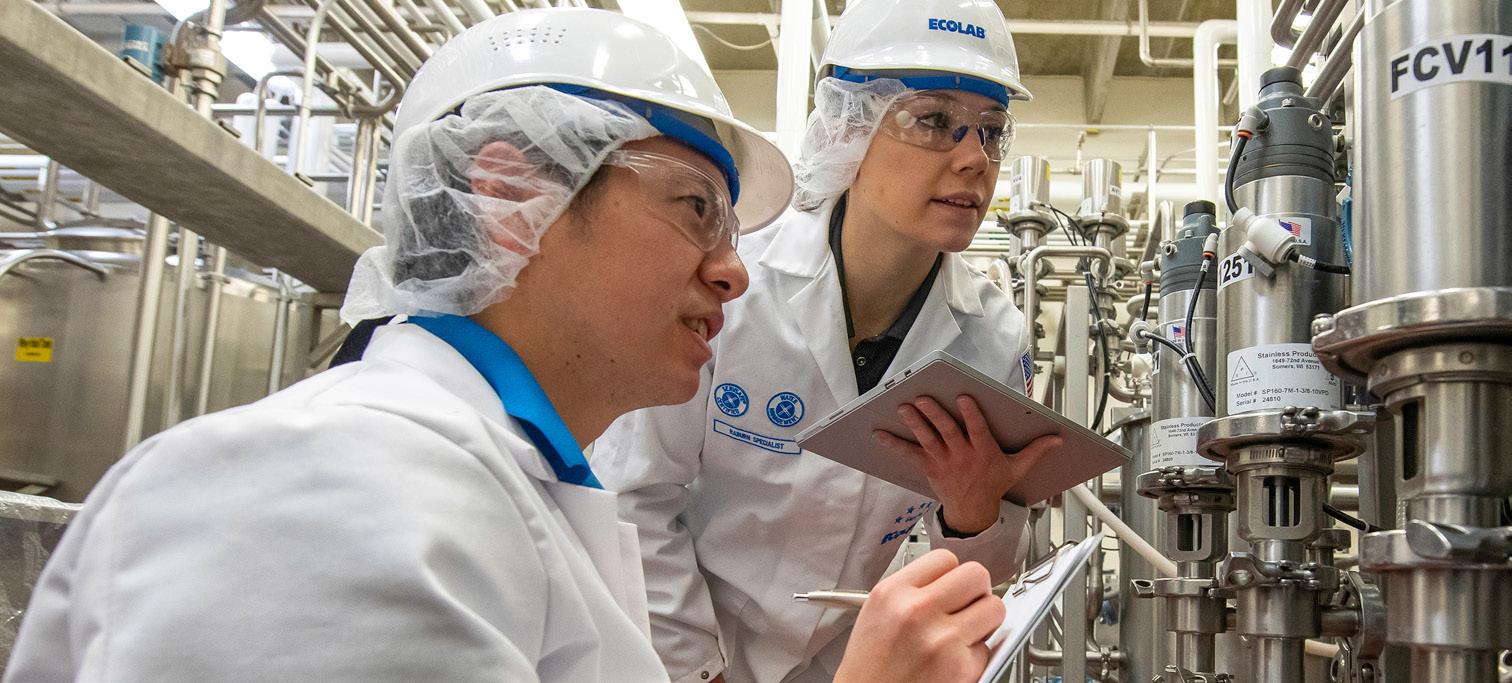




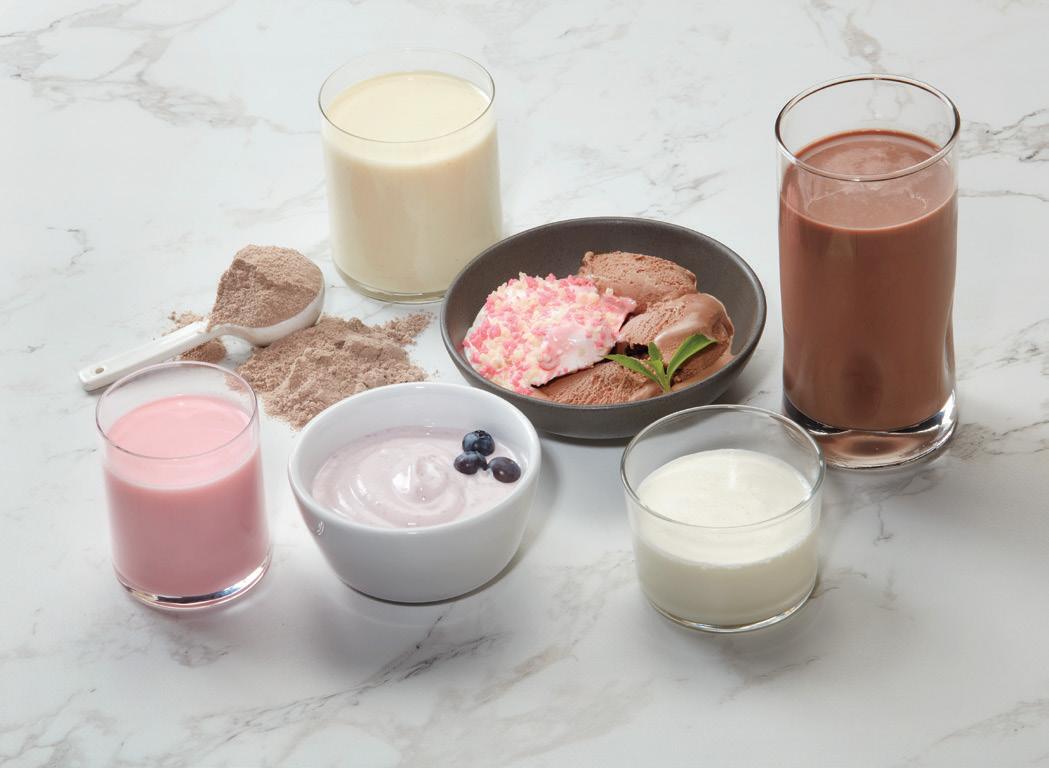
























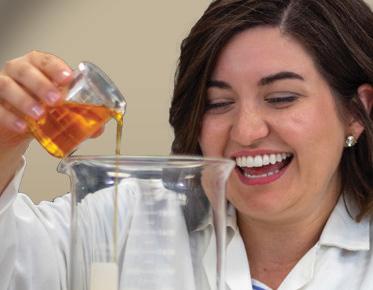







BY COURTNEY KLESS
Canastota Dairy Products is one of the newest members of the Northeast Dairy Foods Association, but you may already know the company by its former name, Queensboro Farm Products.
That company’s journey began in 1909, when Samuel and Louis Miller drove their horse, Nellie, through the streets of New York City, delivering their dairy products.
Over time, Queensboro Farm Products expanded to 15 receiving plants across New York, Connecticut, and New Jersey, including one in Canastota, where all production was moved in the mid-1970s. In the years that followed, many major companies (i.e., Friendly’s Ice Cream, Häagen-Dazs, Baskin-Robbins, McDonald’s, and Burger King) turned to the company for their finished products.
Then, a year and a half ago, the owners decided it was time
for them to retire. There weren’t any family members that could take over the business, so the Lowville Dairy Producers Cooperative stepped in and purchased the facility.
The cooperative has a long history, too — it was established in 1936.
“We have expanded substantially since then,” said General Manager Andy Laslo. “All of our farms at the time were in the Lowville area, and the majority of our farms now, roughly 80%, are still in Lewis County New York. Currently, we have 220 member farms, which are part owners.”
Together, they produce more than 310 million gallons of Grade A milk annually. Despite this, the cooperative has faced losses from dumping milk since 2020.
“Some of these losses were due to not being able to find markets for some of our extra milk we had during the spring flush, while others were due to plant reductions on the week-
“We’re proud of every employee that we have; they’re like family members to us. We don’t have very many employees, so our relationship with them is very important to make sure their ideas are taken seriously, and any input they have helps make us more productive.”
– Andy Laslo, General Manager of the Lowville Dairy Producers Cooperative
ends, holiday shutdowns, maintenance shutdowns, or just from the unexpected breakdowns,” said Laslo. “By acquiring the Canastota plant, we are able to salvage this milk, use some of it for production, use some of it to process and sell the byproducts to other plants (such as cream and skim condensed milk), and the rest can be reloaded and shipped out of state. Since we are not the only co-op that is facing these situations, we have the ability to salvage raw milk for other co-ops and save them from dumping and reduce losses on their side.”
Now called Canastota Dairy Products, the company manufactures 12 products at its Canastota plant. Butter, sour cream, ice cream mixes, cream cheese, and buttermilk are the largest by volume; the rest are smaller and more region-specific. It also has a store that sells items produced at the plant (like butter, sour cream, cream cheese, buttermilk, ice cream mix, and eggnog) — plus cheese from the Lowville Producers Dairy Cooperative’s store, which, according to Laslo, carries more than 75 different varieties.
Throughout the years, service has remained a top priority.
“Queensboro has always operated as a boutique dairy,
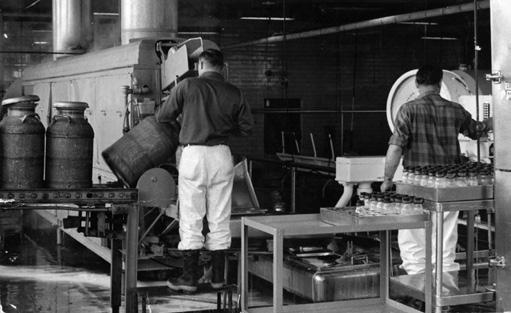


willing to make any adjustments for their customer needs,” said Steven Miller, one of the previous owners.
That hasn’t changed under the new leadership.
“The majority of businesses we work with are distributors or smaller start-up companies,” said Laslo. “We’re a niche business because we have the ability to produce at really small volumes new products that are coming to the market. So, a lot of companies reach out to us first because big dairy manufacturers can’t produce small quantities in small batches. We also do a lot of milk processing for companies that don’t have the ability or aren’t big enough for the time being to process the milk themselves. So, we process it for them, and they bottle it at their facilities and distribute it.”
This personal approach is also at the heart of the company’s culture.
“We’re proud of every employee that we have; they’re like family members to us,” said Laslo. “We don’t have very many employees, so our relationship with them is very important to make sure their ideas are taken seriously, and any input they have helps make us more productive.”


• Optimizing service levels
• Benchmarking costs against our large, proprietary database of similar businesses
• Negotiating new contracts with lower pricing and more favorable terms/conditions
• Verifying and controlling future costs by on-going monitoring of vendor invoices
to have your expenses reviewed by our team of experts.
Call 315-935-9379 or email Steve Thompson at steve@IntegrityCostConsulting.com to start saving today!
Many dairy manufacturers are unknowingly overpaying vendors, losing thousands in unnecessary costs. This case study explores how ICC helped a specialized manufacturer uncover hidden savings through a detailed vendor audit and cost analysis with minimal effort to the manufacturer. By identifying overpriced contracts and inefficiencies, ICC delivered substantial annual savings while improving vendor transparency and control. With rising input costs and tight margins, cost recovery and smarter vendor management are more critical than ever. Learn how ICC’s strategic approach can help your operation cut waste, boost profitability, and gain better control over your expenses.

In today’s economic climate, every dollar matters. Cutting costs is a common goal for many organizations, whether to improve margins, profitability, or productivity.
In today’s economic climate, every dollar matters. Cutting costs is a common goal for many organizations, whether to improve margins, profitability, or productivity.
Integrity Cost Consulting (ICC) works with organizations lacking time and industry experts to verify, reduce, and control non-labor expenses.
Integrity Cost Consulting (ICC) works with organizations lacking time and industry experts to verify, reduce, and control non-labor expenses.
The Challenge
A Syracuse-based manufacturer had a priority to reduce costs, but wasn’t clear where to begin. Monthly invoices from numerous vendors were being paid based on an assumption the charges were correct. “If the charges looked right, we paid it.”
A Syracuse-based manufacturer had a priority to reduce costs, but wasn’t clear where to begin. Monthly invoices from numerous vendors were being paid based on an assumption the charges were correct. “If the charges looked right, we paid it.”
A staff member was assigned the task and began by requesting bids from 2-3 vendors in key expense areas. Soon, the staff member was inundated with meeting requests from competing vendors wanting to pitch their services and pricing.
A staff member was assigned the task and began by requesting bids from 2-3 vendors in key expense areas. Soon, the staff member was inundated with meeting requests from competing vendors wanting to pitch their services and pricing.
“
“
I wish I had been able to meet with ICC first. They identified so many cost-savings opportunities for me that I didn’t even know I should be looking for.” – VP of Operations
I wish I had been able to meet with ICC first. They identified so many cost-savings opportunities for me that I didn’t even know I should be looking for.” – VP of Operations
The Solution
The Solution
After hosting a free 30-minute discovery call, we learned more about the manufacturer’s current expenses and cost-cutting goals.
After hosting a free 30-minute discovery call, we learned more about the manufacturer’s current expenses and cost-cutting goals.
We recommended an audit of the following expenses:
We recommended an audit of the following expenses:
• Waste disposal
• Waste disposal
• Telecommunications
• Telecommunications
• Electric and gas delivery and supply
• Electric and gas delivery and supply
• Textile rental
• Textile rental
We’ll
We’ll
We review many expense categories for various types of clients. Below are some of the more common categories that yield savings across all industries:
We review many expense categories for various types of clients.
Below are some of the more common categories that yield savings across all industries:
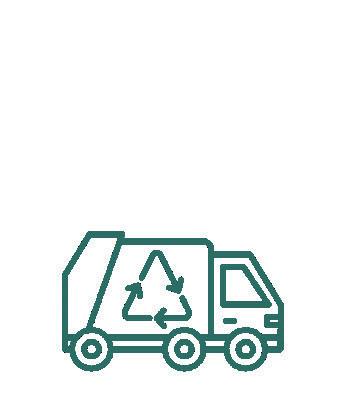


Industrial Laundry/ Textile Rentals

Using our benchmarking database from over 60,000 locations and our diverse team of industry experts, we were able to review all expenses immediately. This eliminated the need for our client to meet with vendors.
Using our benchmarking database from over 60,000 locations and our diverse team of industry experts, we were able to review all expenses immediately. This eliminated the need for our client to meet with vendors.
Using our benchmarking database from over 60,000 locations and our diverse team of industry experts, we were able to review all expenses immediately. This eliminated the need for our client to meet with vendors.
Using our benchmarking database from over 60,000 locations and our diverse team of industry experts, we were able to review all expenses immediately. This eliminated the need for our client to meet with vendors.
Using our benchmarking database from over 60,000 locations and our diverse team of industry experts, we were able to review all expenses immediately. This eliminated the need for our client to meet with vendors.
Our audit uncovered multiple vendor overcharges that had been occurring for many years.
Conclusion
Conclusion
Our audit uncovered multiple vendor overcharges that had been occurring for many years.
Our audit uncovered multiple vendor overcharges that had been occurring for many years.
Our audit uncovered multiple vendor overcharges that had been occurring for many years.
Our audit uncovered multiple vendor overcharges that had been occurring for many years.
Some of the overcharges were refundable and others were not, so our team worked quickly to make the necessary billing and contract changes.
Some of the overcharges were refundable and others were not, so our team worked quickly to make the necessary billing and contract changes.
Some of the overcharges were refundable and others were not, so our team worked quickly to make the necessary billing and contract changes.
Some of the overcharges were refundable and others were not, so our team worked quickly to make the necessary billing and contract changes.
Some of the overcharges were refundable and others were not, so our team worked quickly to make the necessary billing and contract changes.
In addition to correcting billing errors, we were able to negotiate new, more favorable contracts with some of the manufacturer’s current vendors. This allowed the business to reduce expenses immediately without any operational disturbances.
In addition to correcting billing errors, we were able to negotiate new, more favorable contracts with some of the manufacturer’s current vendors. This allowed the business to reduce expenses immediately without any operational disturbances.
In addition to correcting billing errors, we were able to negotiate new, more favorable contracts with some of the manufacturer’s current vendors. This allowed the business to reduce expenses immediately without any operational disturbances.
In addition to correcting billing errors, we were able to negotiate new, more favorable contracts with some of the manufacturer’s current vendors. This allowed the business to reduce expenses immediately without any operational disturbances.
In addition to correcting billing errors, we were able to negotiate new, more favorable contracts with some of the manufacturer’s current vendors. This allowed the business to reduce expenses immediately without any operational disturbances.
“
“At no cost to us, the ICC team reviewed the information we sent and was able to save us thousands of dollars a year by finding errors and overcharges as well as renegotiating contracts on our behalf.” – VP of Operations
“At no cost to us, the ICC team reviewed the information we sent and was able to save us thousands of dollars a year by finding errors and overcharges as well as renegotiating contracts on our behalf.” – VP of Operations
– VP of Operations
“At no cost to us, the ICC team reviewed the information we sent and was able to save us thousands of dollars a year by finding errors and overcharges as well as renegotiating contracts on our behalf.” – VP of Operations
At no cost to us, the ICC team reviewed the information we sent and was able to save us thousands of dollars a year by finding errors and overcharges as well as renegotiating contracts on our behalf.”
A cost verification audit ensures an organization has been and is being billed accurately by vendors and is paying the absolute least amount possible. The audit is effective regardless of the status of vendor contracts.
A cost verification audit ensures an organization has been and is being billed accurately by vendors and is paying the absolute least amount possible. The audit is effective regardless of the status of vendor contracts.
A cost verification audit ensures an organization has been and is being billed accurately by vendors and is paying the absolute least amount possible. The audit is effective regardless of the status of vendor contracts.
A cost verification audit ensures an organization has been and is being billed accurately by vendors and is paying the absolute least amount possible. The audit is effective regardless of the status of vendor contracts.
A cost verification audit ensures an organization has been and is being billed accurately by vendors and is paying the absolute least amount possible. The audit is effective regardless of the status of vendor contracts.
To begin the audit, our team requires a signed letter of engagement and a copy of the latest month’s invoices.
To begin the audit, our team requires a signed letter of engagement and a copy of the latest month’s invoices.
Critical tasks to be performed by ICC include:
To begin the audit, our team requires a signed letter of engagement and a copy of the latest month’s invoices.
To begin the audit, our team requires a signed letter of engagement and a copy of the latest month’s invoices.
Critical tasks to be performed by ICC include:
To begin the audit, our team requires a signed letter of engagement and a copy of the latest month’s invoices.
• Obtaining vendor refunds for past billing errors and overcharges
• Optimizing service levels
Critical tasks to be performed by ICC include:
Critical tasks to be performed by ICC include:
Critical tasks to be performed by ICC include:
• Obtaining vendor refunds for past billing errors and overcharges
• Obtaining vendor refunds for past billing errors and overcharges
• Optimizing service levels
• Obtaining vendor refunds for past billing errors and overcharges
• Obtaining vendor refunds for past billing errors and overcharges
• Benchmarking costs against our large, proprietary database of similar businesses
• Optimizing service levels
• Optimizing service levels
• Optimizing service levels
• Benchmarking costs against our large, proprietary database of similar businesses
• Negotiating new contracts with lower pricing and more favorable terms/conditions
• Benchmarking costs against our large, proprietary database of similar businesses
• Benchmarking costs against our large, proprietary database of similar businesses
• Benchmarking costs against our large, proprietary database of similar businesses
• Negotiating new contracts with lower pricing and more favorable terms/conditions
“At no cost to us, the ICC team reviewed the information we sent and was able to save us thousands of dollars a year by finding errors and overcharges as well as renegotiating contracts on our behalf.” – VP of Operations Call 315-935-9379
• Verifying and controlling future costs by on-going monitoring of vendor invoices
• Negotiating new contracts with lower pricing and more favorable terms/conditions
• Negotiating new contracts with lower pricing and more favorable terms/conditions
• Negotiating new contracts with lower pricing and more favorable terms/conditions
• Verifying and controlling future costs by on-going monitoring of vendor invoices
• Verifying and controlling future costs by on-going monitoring of vendor invoices
• Verifying and controlling future costs by on-going monitoring of vendor invoices
• Verifying and controlling future costs by on-going monitoring of vendor invoices



In the heart of New York’s Mohawk Valley, where history and industry meet, a new chapter is unfolding.
After announcing a $500 million expansion in Twin Falls, Idaho last month, Chobani broke ground in April on a new, $1.2 billion, state-of-the-art plant in Rome, New York. This new facility is about building for the future — creating jobs, supporting family farms, transforming communities, and delivering better food to more people.
“New York is where Chobani’s journey began. It was the perfect spot to start Chobani 20 years ago, and it’s the perfect place to continue our story. Working with dedicated dairy farmers and the resilient community, we built something truly special — something bigger than the food we make. We ignited a movement toward better food made with heart, passion, and only the highest-quality ingredients,” said Hamdi
Ulukaya, founder and CEO. “With our new plant in Rome and our original home in South Edmeston, we’re entering a new dimension, partnering with hard working people across the heartland of New York to build an ecosystem of natural food production and nourish families throughout the country. When you invest in people, in local communities, you’re not just building a business — you’re building a future.”
Once home to the former Griffiss Air Force Base, the 150acre open stretch of land will transform into a thriving center of food production, enabling Chobani to keep up with soaring product demand and create runway for new innovations. The 1.4 million square-foot facility is expected to create over 1,000 full-time jobs with competitive wages, an attractive benefits package, and access to a suite of on-site health and wellness amenities.
With capacity to produce over one billion pounds of high-quality dairy products per year, the new plant will house up to 28 production lines designed to process approximately 12 million pounds of milk per day. One of the largest buyers of raw milk in the state, Chobani purchases over a billion pounds of raw milk from New York State dairy farms each year. Once the new plant reaches full capacity, Chobani will purchase an estimated six billion pounds per year, creating additional economic opportunity and strengthening the state’s dairy industry.
Cabot Creamery is teaming up with Fenway Park as a sponsor and concession vendor this sea-
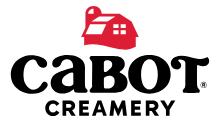
son. The two organizations share an award-winning legacy of bringing families together, making memories and celebrating time-honored traditions for over a century.
“As a farmer-owned cooperative, collaboration is at the heart of everything we do,” said Kelly Littlefield, director of brand experience at Cabot Creamery. “This partnership is a true celebration of our New England heritage and the power of community. Our hardworking team is proud to share our delicious products with the home team!”
STEWART’S SHOPS RECOGNIZED AS A TOP WORKPLACE

Stewart’s Shops has been recognized for the eighth time as a top workplace. It was among 49 businesses out of more than 25,000 in the region that were recognized at the 14th annual Albany Times Union Top Workplaces

event held April 10 at the Old Daley on Crooked Lake conference center in Averill Park.
“This is a great honor,” said Tony Carnevale, vice president of personnel at Stewart’s Shops. “It is a testament to the ownership and hard work of our partners who make an impact serving hundreds of communities every day.”
BELGIOIOSO CHEESE, GREAT LAKES CHEESE RECOGNIZED AT UNITED STATES CHAMPIONSHIP CHEESE CONTEST


BelGioioso Cheese’s Marinated Fresh Mozzarella (Fresh Basil & Garlic), Polly-O Fresh Mozzarella String Cheese, and Aged Provolone all took first place at the United States Championship Cheese Contest in March. Its Asiago Fresco (second place) and Polly-O New York Style Ricotta (third place) also received awards.
CONTINUED ON NEXT PAGE ►





“Congratulations to all our talented and hard-working Cheesemakers who continue to craft award-winning cheeses year after year!” the company said in a Facebook post.
Great Lakes Cheese was also recognized, earning Best in Class awards for its Mild Provolone Cheese and Pepper Jack Cracker Cuts, as well as a third-place finish for its New York Extra Sharp Cheddar.
“Thank you to our employee-owners whose hard work and dedication has allowed us to continue our legacy of quality and excellence for over 65 years,” the company said in a LinkedIn post. “By coming together, we lead categories, win awards, and achieve great things.”
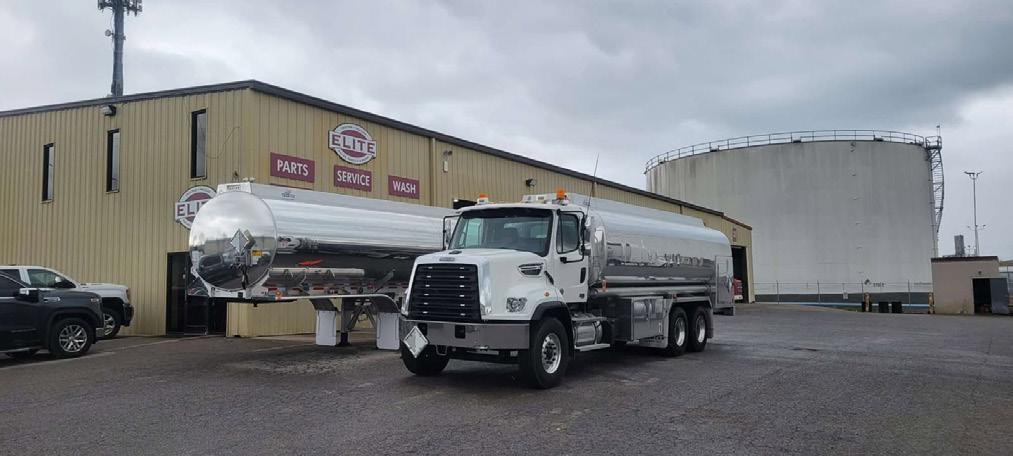
Tremcar USA is proud to announce its newest dealership partnership with Elite Trailer Sales & Service, a family-owned and operated business based in Nashville, Tennessee.
For over 20 years, Elite Trailer Sales & Service has built a stellar reputation for delivering top-tier service to customers across the region. Known for its commitment to quality, Elite offers a full range of services including preventive maintenance, certified inspections, welding and fabrication, tank repair, custom installations, and full-service tank washes.
“At Tremcar, we believe in proximity and agility,” said CEO Daniel Tremblay. “Being close to our customers allows us to deliver exceptional after-sales service with speed and efficiency.”
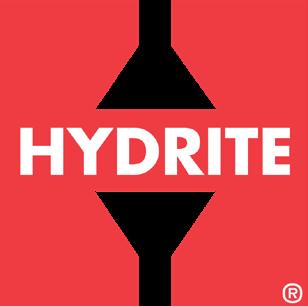
Based on a survey conducted in the counties of Dodge, Jefferson, Kenosha, Milwaukee, Ozaukee, Racine, Sheboygan, Walworth, Washington, and Waukesha, companies are awarded this recognition. Employee feedback, gathered through a third-party engagement survey, determines the top achievers for that year. The survey assesses an organization using several factors, including 15 research-based culture drivers and three statements that measure employee engagement.
“People are among one of Hydrite’s five pillars, and we could not earn this recognition without each one of our employees,” said President Kevin Honkamp. “For 96 years Hydrite has had the privilege of having great people strive for excellence, not only are they great ambassadors for Hydrite but for their communities as well. The strong foundation that has been built around people started 96 years ago, and each employee present and past has left their mark for all Hydrite’s successes and look forward to where it will take Hydrite as we approach 100 years.”

Nelson-Jameson, a leading distributor in the food processing industry, has announced a grand opening event date of Sept. 10 for its new distribution center located in northwest Pennsylvania. The 45,000-square-foot warehouse in Fairview, Pennsylvania, located just 12 miles from Erie, marks a significant step in enhancing its capabilities and more efficiently serving customers and partners in the Northeastern United States.
The new Nelson-Jameson location in Fairview is one of
Hydrite, an integrated manufacturer and supplier of chemicals and related services, has been recognized as a 2025 Top Workplaces award winner for the ninth time by Milwaukee Journal Sentinel for creating high employee experience and exceptional workplaces.
the organization’s five distribution centers nationwide, rein forcing its core mission of being a one-stop shop that delivers a broad range of products and services that help companies uphold the highest standards of food safety, quality, and compliance. The new facility will hire up to 20 full-time employees.

“Our team couldn’t be more excited to mark Sept. 10 on our calendars and cut the ribbon on the Fairview facility,” said President Mike Rindy. “The new distribution center will be another key building block in delivering exceptional service while prioritizing food safety for our customers and partners in the Northeast and beyond.”
ULTRASILTM CONNECTED from Ecolab® delivers next-level membrane cleaning with innovative enzymatic chemistries and advanced insights. Combined with the support and expertise of our industry-leading team, our integrated digital module helps boost performance and minimize downtime — without chlorine.
Ecolab, a global sustainability leader offering water, hygiene and infection prevention solutions and services that protect people and the resources vital to life, has been named one of the 2025 World’s Most Ethical Companies® by Ethisphere, a global leader in defining and advancing the standards of ethical business practices. Ecolab
responsibly and serving our customers with integrity is what fuels our growth and enables our positive impact.”
The World’s Most Ethical Companies assessment is grounded in Ethisphere’s proprietary Ethics Quotient®, which requires companies to provide more than 240 different proof points on practices that support robust ethics and compliance; governance; a culture of ethics; environmental and social impact; and initiatives that support a strong value chain. That data undergoes further qualitative analysis by its panel of experts who spend thousands of hours vetting and evaluating each year’s group of applicants. This process serves as an operating framework to capture and codify best-in-class ethics and compliance practices from organizations across industries and from around the world.
Learn more at ecolab.com/ultrasil ©2025 Ecolab Inc. All rights reserved.
Have you recently won an award?


Do you have any new products coming out?
Are you planning an expansion?
Email courtneyk@nedairymedia.com with more information.
CLAYCO
Dan Jacoby
Engineering Project Manager jacobyd@calycorp.com 8620 Evans Lane St Louis, Missouri claycorp.com
G&R FOODS INC.
Andri Kuswendra Director of Marketing & Dairy Ingredients Andri@grfoodsinc.com 321 Wengel Drive Reedsburg, Wisconsin grfoodsinc.com
GORGEOUS GOAT CREAMERY
Maria Stewart Owner
info@gorgeousgoat.com 17 Saw Mill Road Stockton, New Jersey gorgeousgoat.com
GUARDICLOUD
Kieran McManus CEO
kieran@guardicloud.com P.O. Box 1653 Auburn, New York guardicloud.com
INNOVATION ENERGY GROUP, INC.
Joseph Taylor President
j.taylor@innovationenergygroup.net 2016 Broad Hill Farms Road Coraopolis, Pennsylvania innovationenergygroup.net
PROMINENT FLUID CONTROLS
David Cipollone
Regional Sales Manager – Food and Beverage cipollone.david@prominent.com 136 Industry Drive Pittsburgh, Pennsylvania prominent.us
VEOLIA WTS SOLUTIONS, INC.
Zach Eastling F&B Sales Director
zach.eastling@veolia.com 5951 Clearwater Drive Minnetonka, Minnesota watertechnologies.com

The Northeast Dairy Foods and Suppliers Associations kicked off its 2025 events calendar with the Dairy Blender, held on March 25 at the Hyatt Regency in Rochester, New York.
“The Dairy Blender was another fantastic and valuable event for members to learn more about Cayuga Milk Ingredients, Saputo, and Yancey’s Fancy, and then network with each other afterwards,” said Executive Director Alex Walsh. “It always brings together processors, manufacturers, and suppliers for an afternoon with an educational component, and then relationship building in the evening. Thank you to our presenters, sponsors, and attendees for making this a success again this year.”

















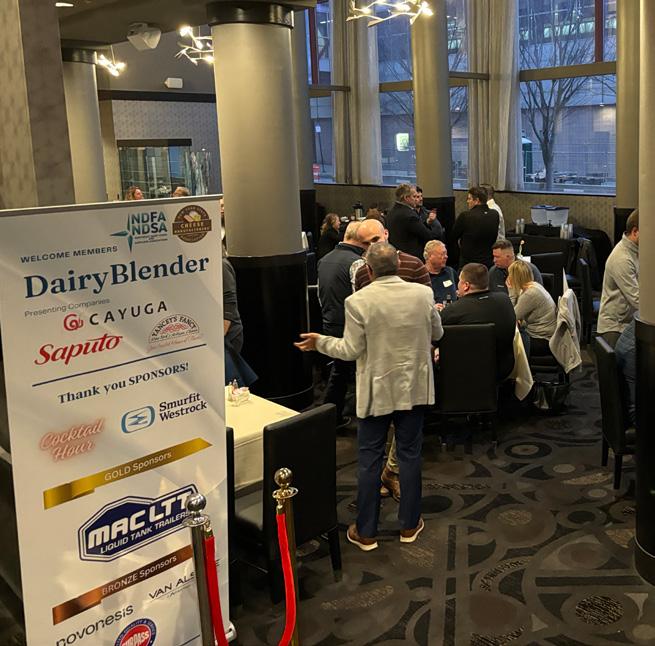




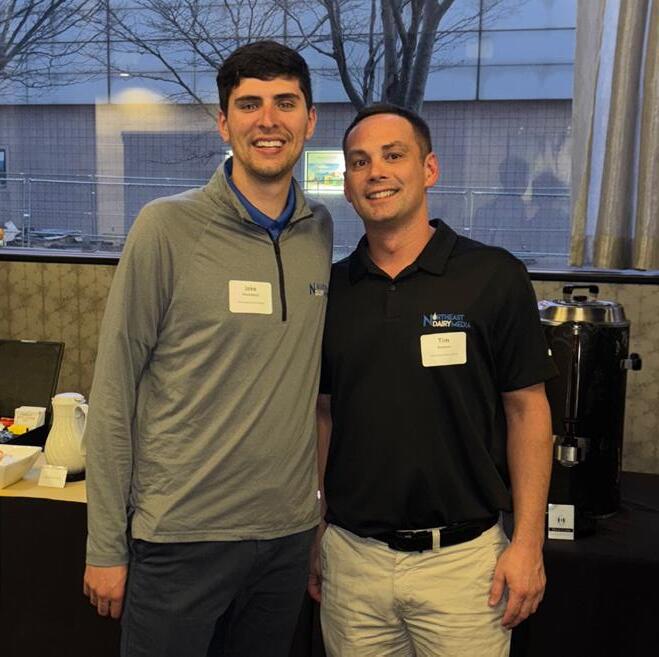




WEDNESDAY, JULY 9
Rogues Roost Golf Club
Bridgeport, New York
Registration opens at 7 a.m., tee off is promptly at 8 a.m. The tournament will be a shotgun start of foursomes, with a captain and crew format. Individuals may register and form their own foursomes or be placed in one by the tournament director. Cash prizes will be awarded for the top team winners, longest drive, and closest to the pin. Golf Registration is $125 per person, which includes breakfast pizza, donuts, coffee, a cart, and non-alcoholic beverages on the course. Registration is limited to the first 192 players. Anyone who registers after the tournament is full will be placed on a wait list. We play in all weather conditions, except lightning.
Spinning Wheel Event Center North Syracuse, New York
Tickets are $110 each for ALL YOU CAN EAT steamed clams, raw clams, clam strips, steamed mussels, clam chowder, hamburgers, hot dogs, coneys, BBQ beef, sausage with peppers and onions, chicken tenders, chicken wings, grilled chicken breast, various salads, milk, beer, soda, water, coffee, and a pig roast. Lobster tickets are $135 each, and include everything above, plus lobster served at 4 p.m.
The ticket price increases by $25 each after June 30; lobster tickets are based on availability. To avoid long lines and delays, please distribute tickets to your guests in advance. A limited “will call” service will be available.
WEDNESDAY, SEPT. 17 –
FRIDAY, SEPT. 19
MGM Springfield, Massachusetts
This event promises to be an exciting and informative gathering for all professionals in the dairy industry.
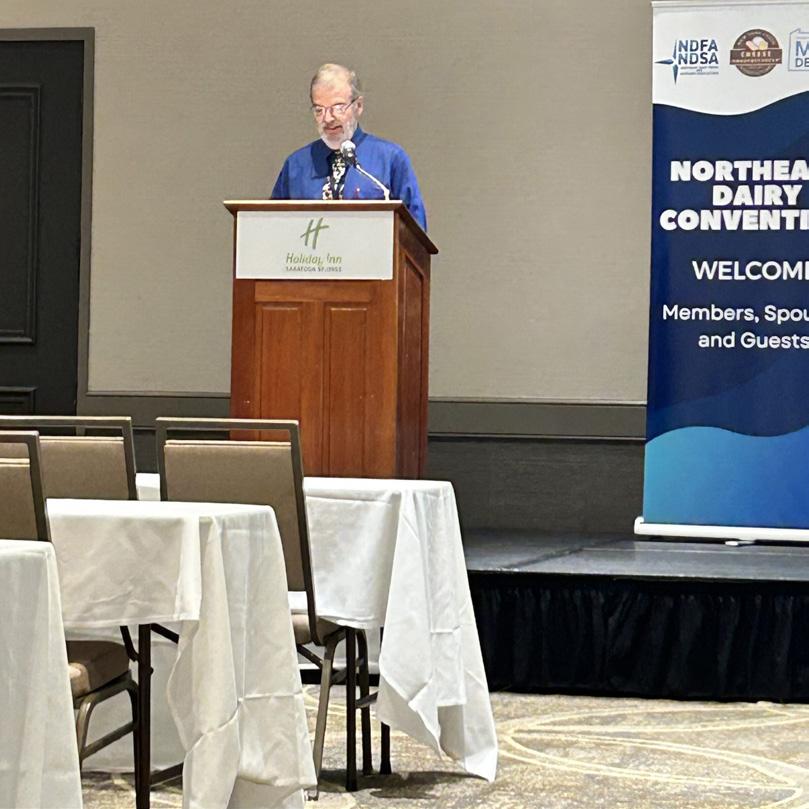
• Networking Opportunities: Connect with industry leaders and peers during our VIP Networking event on Wednesday evening.
• Educational Sessions: Gain insights from expert speakers on the latest trends and innovations in dairy production and supply.
• Fun Activities: Participate in our golf tournament or enjoy a visit to The Big E.

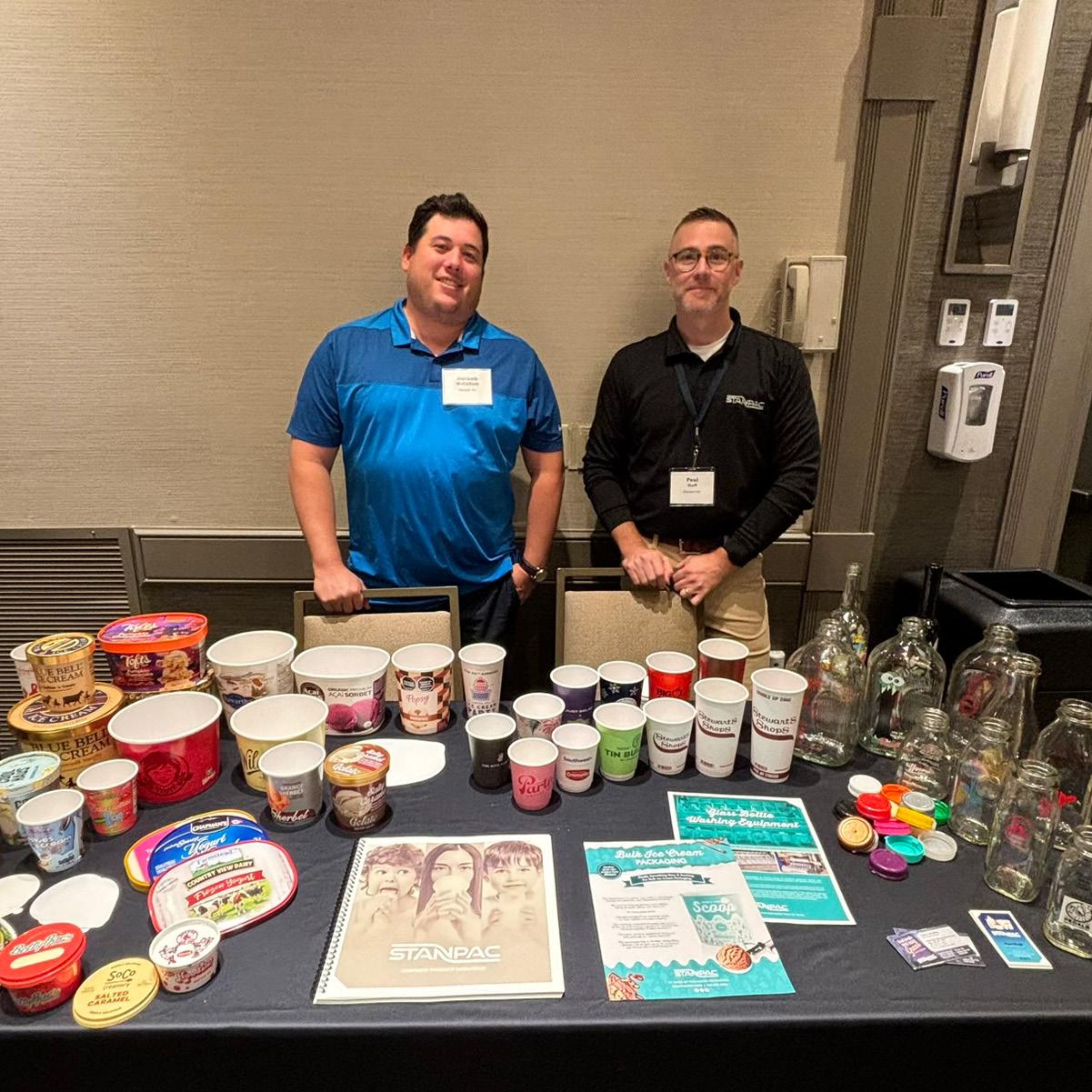
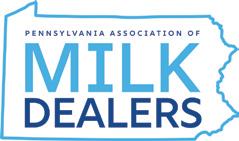
WEDNESDAY, SEPT. 17
• noon – Registration and Vendor Table Setup
• 3 p.m. – NYSCMA Board Meeting and Hotel Check-in
• 5 p.m. – VIP Networking
• 5:30 p.m. – Cocktails and Dinner
THURSDAY, SEPT. 18
• 8 a.m. – Opportunities through NEDBIC
Laura Ginsburg, Dairy Strategy and Innovation Manager, Vermont Agency of Agriculture, Food & Markets
• 8:45 a.m. – Vendor Tables/Exhibits
• 9:30 a.m. – Empowering the Workforce
Kim Bukowski, Dairy Extension Specialist, Cornell University
• 10:15 a.m. – Commercial Applications of AI and Machine Learning in the Dairy Industry
Katie Moore, Vice President, Dairy Software Division, Ever.ag
• noon – Golf Tournament at The Ranch Golf Club or The Big Excursion
• 5:30 p.m. – Cocktails and Dinner
FRIDAY, SEPT. 19
• 8:30 a.m. – Regulatory Updates and the State of the Industry
Ashley Randle, Commissioner, Massachusetts Department of Agricultural Resources
• 9:15 a.m. – Sam Alcaine, Vice President, Regulatory and Scientific Affairs, IDFA
• 10 a.m. – Panel Discussion and Vendor Table Teardown
• 11:30 a.m. – NDFA Board Meeting

The MGM Springfield combines new construction with revived historic buildings, offering gaming, a 250-room boutique hotel, spa services, TopGolf, TAP bowling, Regal Cinema, retail, and dining.
Hotel room reservations are to be made using link that will be provided once registration is submitted. The hotel room rate for two nights (up to two people) is $338 plus tax. The room block is not guaranteed after Aug. 26.
BY MELINDA AIKEN
The dairy industry, while essential, often operates on tight margins and demanding schedules, all while under increasing pressure to market smarter, not just harder. Whether you’re a large international business or a smaller, family-run operation, the pressure to optimize efficiency is constant. Marketing, while crucial for attracting new business and nurturing existing relationships, can often feel like an added burden on already stretched resources.
Traditional marketing tasks, such as crafting compelling content, managing advertising campaigns, engaging with customers, and analyzing performance, can be time-consuming and require a significant amount of manpower. This is where the power of AI-powered tools comes into play, offering a way to automate and optimize these tasks, freeing up your team to focus on core business activities, supply chain complexities, and strategic initiatives.
Think of AI in marketing as having a team of intelligent
assistants working alongside you. These tools leverage algorithms and machine learning to automate repetitive tasks, analyze vast amounts of data quickly, and provide insights that can significantly improve the effectiveness and efficiency of your marketing efforts. From content creation to customer engagement, AI is being integrated into a wide array of marketing tools, making sophisticated strategies more accessible than ever before.
For dairy suppliers, where marketing must balance tradition, regulation, and fluctuating consumer trends, AI can be a game-changer. Imagine automatically segmenting your audiences based on buying habits, predicting seasonal demand for specific products, or tailoring messaging for retailers vs. end consumers—all without manually crunching the numbers. AI tools can help generate content for dairy headlines, emails, and even packaging copy based on what’s trending or performing well, saving your team time and ensuring messaging is always fresh and relevant.
What’s more, AI enables precision targeting. Instead of casting an unpredictable forecast, dairy marketers can use AI to identify the most responsive audiences, optimize ad spend, and track campaign performance with granular insights.
Let’s explore some specific examples of popular marketing tools that have integrated AI features and how they can help dairy suppliers save time, streamline operations, and boost productivity:
Creating engaging and relevant content is essential for attracting and retaining both consumers and distributors in the competitive dairy landscape. Whether you’re promoting a new product line, educating on sustainability practices, or communicating shelf-life benefits to retailers, content must resonate with each stakeholder in the supply chain. However, the process can be time-consuming. AI-powered tools are stepping in to assist:
• Canva: This popular design platform now offers AI-powered features like “Magic Design,” which can automatically generate design templates based on your content, saving you significant time on layout and visual creation. Its “Magic Write” feature, powered by AI, can help you brainstorm ideas, generate text for social media posts, and even assist in writing longer-form content, speeding up the content creation process.
• Copy.ai and Jasper (formerly Jarvis): These are dedicated AI writing assistants that can generate various forms of marketing copy, including website headlines, social media posts, email subject lines, and even blog post outlines, based on your input. This can drastically reduce the time spent brainstorming and drafting initial content.
Managing advertising campaigns, particularly on platforms such as Google and social media, can be complex and time-consuming. AI is providing powerful solutions:
• Google Ads: Google’s advertising platform heavily leverages AI for various tasks, including automated bidding strategies (like Smart Bidding), which automatically adjust your bids in real-time to maximize conversions within your budget. AI also powers features like Performance Max campaigns, which automate ad placement and targeting across Google’s network, saving you significant time on manual campaign management and optimization.
• Facebook and Instagram Ads: Meta’s advertising platform utilizes AI for audience targeting, ad delivery optimization, and even creative suggestions. AI algorithms analyze user data to help you reach the most relevant audience and automatically adjust ad delivery to enhance performance, thereby reducing the need for frequent manual adjustments.
Engaging with consumers and distributors promptly and effectively is crucial for building strong relationships. AI-powered chatbots are providing a way to do this efficiently:
• HubSpot, Intercom, and Zendesk: These are a few of the popular customer relationship management (CRM) and customer service platforms that offer AI-powered chatbot features and can automate responses to frequently asked questions, qualify leads, and provide instant support 24/7. This frees up your sales and customer service teams to focus on more complex issues and strategic interactions, significantly improving response times and customer satisfaction without requiring constant human intervention.
Email marketing remains a vital tool for nurturing leads and retaining customers, especially in the dairy industry, where strong relationships with retailers, distributors, and foodservice partners are essential. AI is enhancing its effectiveness by helping suppliers personalize content, automate follow-ups, and predict which types of communication will drive the most engagement.
• HubSpot and Marketing Cloud Account Engagement (Formerly Pardot): These leading email marketing platforms incorporate AI features like send-time optimization, which analyzes past engagement data to determine the best time to send emails to individual recipients for maximum open rates. AI can also assist with email personalization by suggesting relevant content and subject lines based on subscriber behavior and preferences, saving you time on manual segmentation and content tailoring.
Analyzing marketing data to understand performance and
identify opportunities can be a time-consuming process. AI is helping to streamline this:
• Google Analytics: While not solely AI-powered, Google Analytics leverages machine learning to provide insights into user behavior, identify trends, and even predict future outcomes, helping you quickly understand what’s working and where improvements can be made without having to manually sift through vast amounts of data.
• HubSpot: HubSpot’s marketing analytics tools also incorporate AI to provide deeper insights into campaign performance, lead generation, and customer engagement, helping you make data-driven decisions more efficiently.
For the dairy industry, where every marketing decision must balance tight margins, shifting demand, and evolving consumer preferences, AI-powered analytics tools are transforming the marketing landscape. By automating the analysis of performance data, platforms like Google Analytics and HubSpot enable dairy suppliers to identify what resonates and pivot quickly when needed. The result? Smarter, faster decisions that support stronger relationships across the supply chain and more efficient growth in an increasingly competitive market.
Managing a consistent presence on social media can be a significant time commitment. AI can help automate and optimize these efforts:
• HubSpot, Buffer, and Hootsuite: These social media management platforms offer AI-powered features that can suggest optimal posting times based on audience activity, help you discover relevant content to share, and even analyze the sentiment of social media mentions, allowing you to manage your social media presence more efficiently and effectively.
The time saved and increased efficiency gained through the use of AI-powered tools directly translate to higher productivity for your marketing team. This newfound productivity allows you to implement more comprehensive and strategic marketing initiatives. Instead of spending hours on repetitive tasks, your team can focus on developing creative
campaigns, building stronger relationships with key accounts, and exploring new growth opportunities within the dairy supply industry. By reaching more potential customers and distributors through optimized and targeted marketing efforts, you can directly contribute to the growth of your business.
AI-powered tools also play a crucial role in improving customer and distributor retention within the dairy industry. With AI-driven insights and automation, suppliers can personalize communications at scale, delivering timely, relevant messaging to retailers, foodservice partners, and even consumers.
AI chatbots can offer instant support for common queries, such as product availability, shipping details, or storage guidelines, enhancing satisfaction and reducing the workload on internal teams. Meanwhile, AI-powered analytics can identify disengaged accounts or distributors at risk of churn by analyzing factors such as order frequency, email engagement, and support interactions. This allows dairy businesses to take proactive steps to strengthen relationships before issues escalate.
In an industry where trust, consistency, and timing are everything, this efficient and personalized approach helps build long-term loyalty across every link in the dairy supply chain.
The digital landscape continues to evolve, and embracing new technologies like AI is no longer just an option, but imperative for businesses in the Northeast Dairy Suppliers Association to thrive and grow. By leveraging the power of AI-powered tools, you can significantly streamline your marketing efforts, save valuable time, and boost overall productivity. These efficiencies will not only free up your team to focus on strategic growth initiatives but also enable you to build stronger, more personalized relationships with your customers and distributors, ultimately leading to greater success and a more sustainable future for your business within this vital industry. We encourage you to explore the potential of AI and unlock a new era of efficiency and growth for your dairy business.


Melinda Aiken is a Marketing Manager & Client Services Manager for Site-Seeker.
To maximize your membership or join the association, contact Alex Walsh, Executive Director at alex.walsh@ndfsa.org or visit NDFSA.ORG.
Legislative & Regulatory Representation Through Government Relations & Lobbying
Safety and Environmental Information
Economic Analysis and Forecasting
Continuing Education and Certification Opportunities
Industry Spokesperson
NETWORKING, MEETINGS & EVENTS
Annual Northeast Dairy Convention
Dairy Blender
Exhibit Booth at the Annual Northeast Dairy Convention
Annual Dairy Industry Clambake
Hospitality and Sponsorship Opportunities
Annual Bruce Krupke Memorial Golf Tournament
COMMUNICATIONS & PUBLIC RELATIONS
Quarterly Digital Copy of Northeast Dairy Magazine
Direct Customer Advertising Opportunities
Bruce Krupke Memorial Scholarship Program
Membership Directory with Key Contacts in the Dairy Industry
Digital Buyers Guide
Weekly Dairy Newsletter
An association represents your interests before your government leaders, industry and business community. If your business/industry faces major threats or needs support, our association is right there on the front line fighting for you.
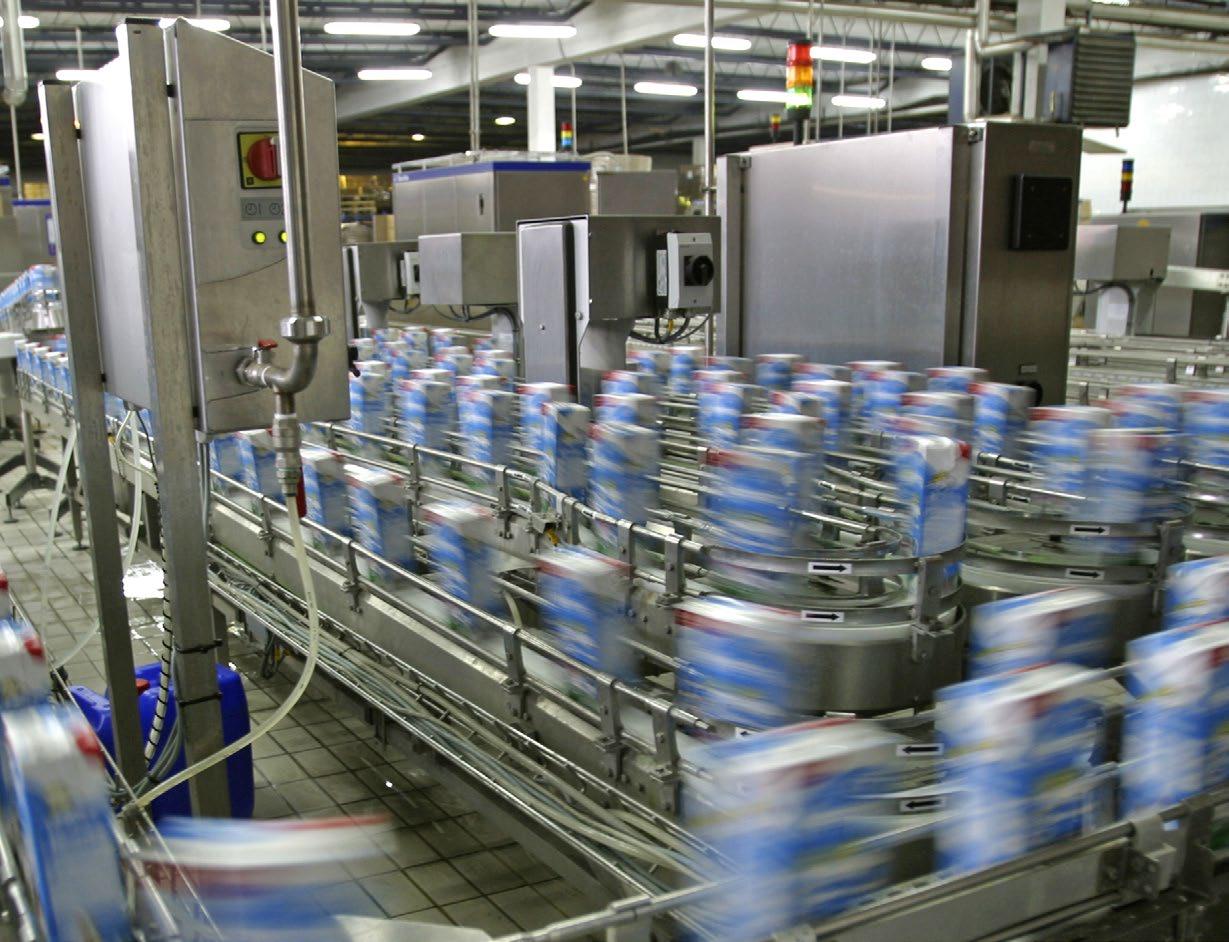
Association events, meetings and member directories make networking a reality for you and your peers. This is the one advantage many view as the most important reason to join!

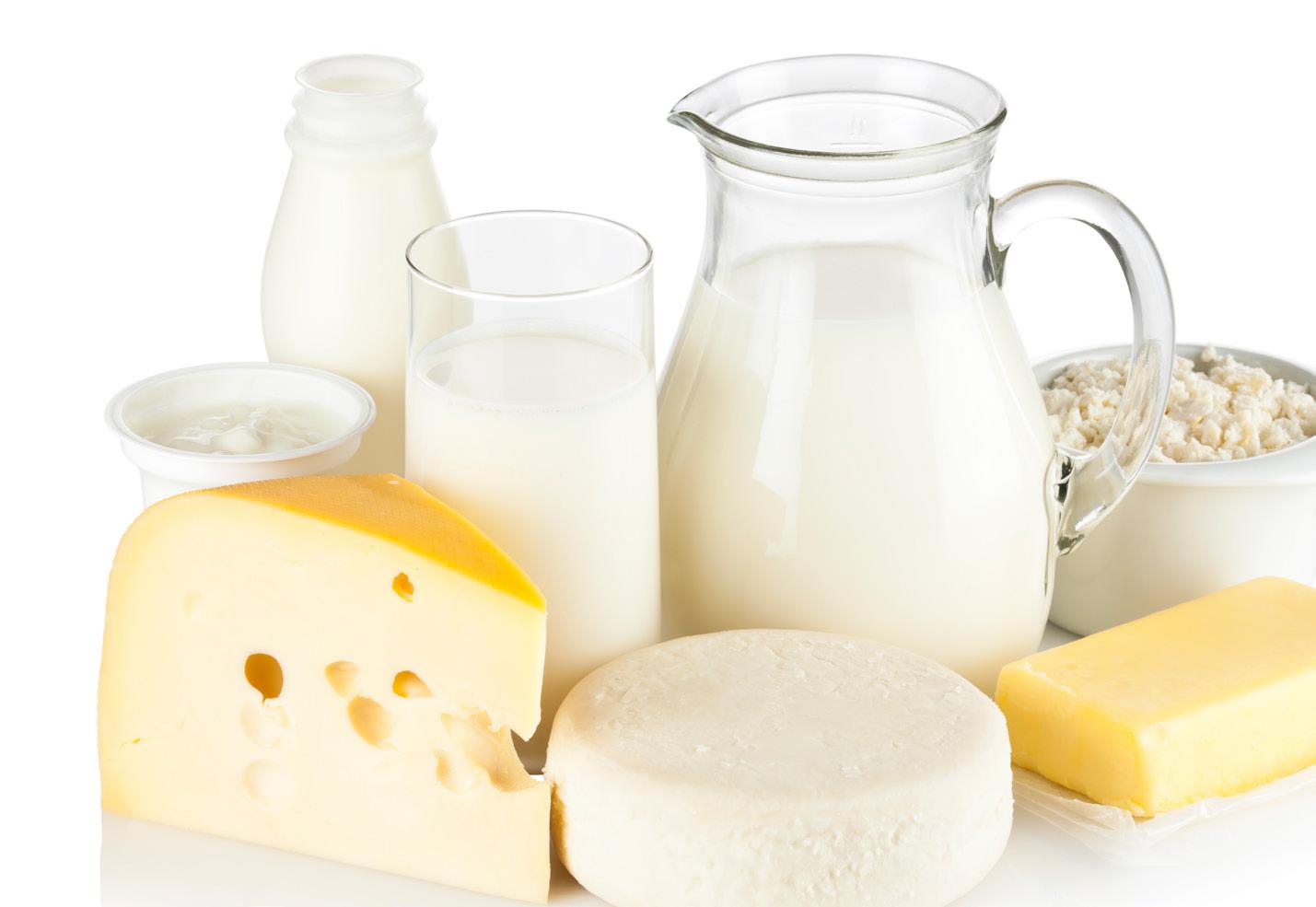
art of developing a comprehensive digital marketing campaign is understanding how customers and potential customers are using the Internet to find your products and your website. The graphs and information below all come from Google Trends, which analyzes the popularity of queries in Google Search across various regions and languages. The graphs scale “Interest Over Time,” which represent search interest relative to the highest point in the chart for the given region and time-period. So, a value of 100 is the peak popularity for the term.
Another alternative is Google Keyword Planner. To use this tool, you must have a Google Ads account. The Keyword Planner lets you search keywords and suggests other words or phrases related to your products and services. It lets you research the trend information for how often certain words are searched and how those searches have changed over time and also gives you suggested bid estimates for each keyword, so you can determine your advertising budget.
In today’s digital environment, we strongly encourage members to capitalize on this growing trend and ensure that your company is visible in the place where people search the most.

Average Search Volume has increased 12.5% YoY
Average Search Volume has increased 44.6% over the past five years
RELATED SEARCH QUERIES
1. Benefits of milk
2. Milk health benefits
3. Whole milk benefits
4. Benefits of drinking milk


Average Search Volume has increased 71.4% YoY
Average Search Volume has increased 1800% over the past five years
RELATED SEARCH QUERIES
1. What is AI
2. Artificial intelligence 3. Free AI 4. Best AI

Average Search Volume has increased 16.9% YoY
Average Search Volume has increased 32.4% over the past five years
RELATED SEARCH QUERIES
Lactose intolerance
Lactose free cream
Lactose free cheese
Lactose free yogurt
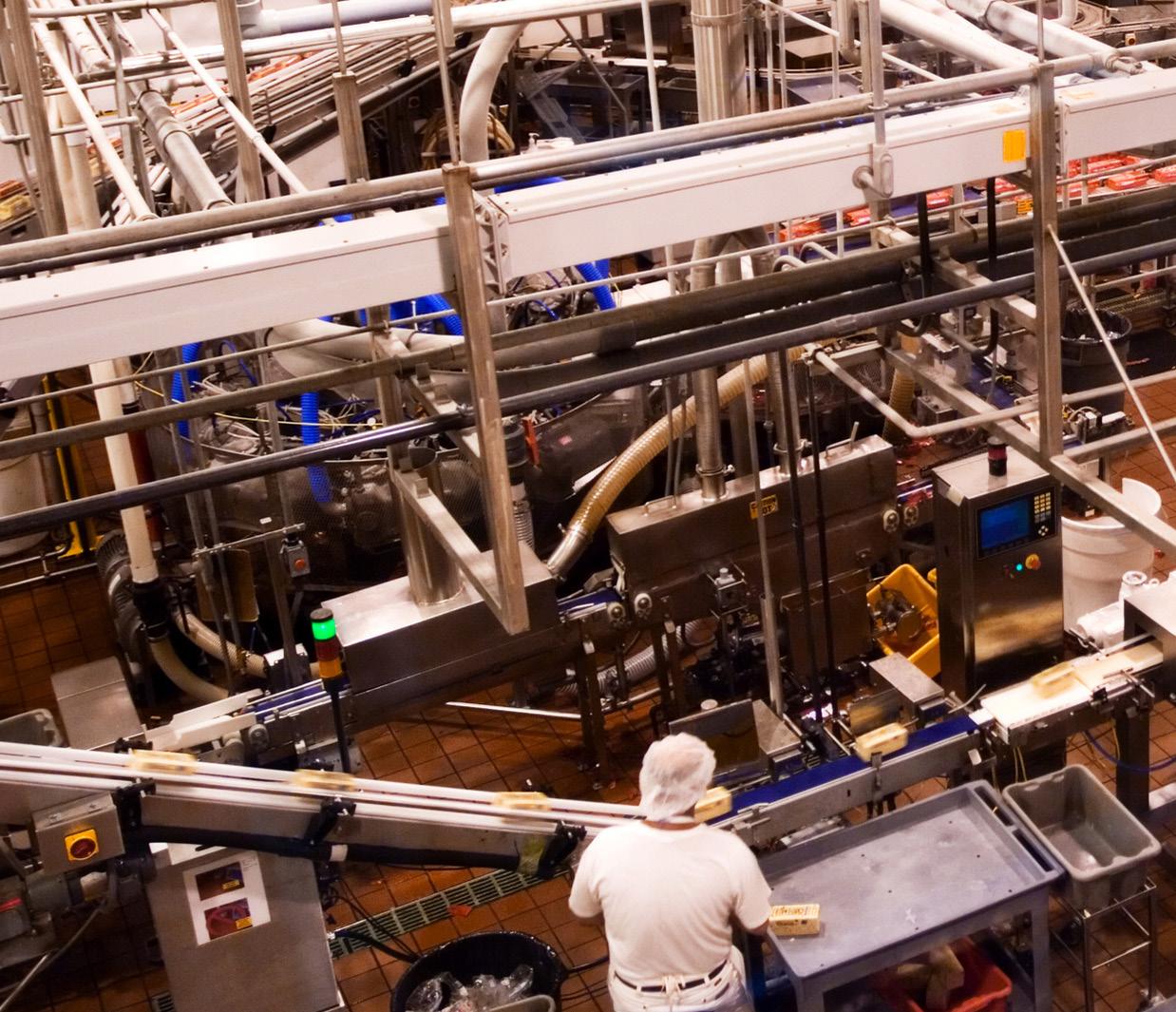
Workplaces can have many stressors. Issues in the workplace can exacerbate the risk of experiencing mental health challenges. Combined, these stressors can make it more difficult for workers to get their tasks done; threaten their productivity, happiness, and well-being; and lead to burnout. Because of the many potential stressors employees may be experiencing, a comprehensive approach is needed to address stressors throughout the community, and employers can be part of the solution. More than 85% of employees surveyed in 2021 by the American Psychological Association reported that actions from their employer would help their mental health.
The goal is to find ways to alleviate or remove stressors in the workplace to the greatest extent possible, build coping and resiliency supports, and ensure that people who need help know where to turn. Reducing workplace stress benefits everyone across an organization. It can improve morale and lead to increased productivity and better focus, fewer workplace injuries, fewer sick days, and improved physical health (e.g., lower blood pressure, stronger immune system). All these factors can also lead to reduced turnover among an employer’s workforce.
In fact, the World Health Organization estimates that for every dollar U.S. employers spend treating common mental health issues, they receive a return of $4 in improved health and productivity. Employers can make a difference when it comes to helping their staff manage stress. Key things they can do include:
• Be aware and acknowledge that people can carry an emotional load that is unique to their own circumstances. They may be experiencing heightened levels of loneliness, isolation, uncertainty, grief, and stress; and some may face additional demands, such as parents caring for
INCLUDE:
• Concerns about job security (e.g., potential layoffs, reductions in assigned hours).
• Lack of access to the tools and equipment needed to perform work safely.
• Fear of employer retaliation.
• Facing confrontation from customers, co-workers, supervisors, or employers.
• Adapting to new or different workspace and schedule or work rules.
• Having to learn new or different tasks or take on more responsibilities.
• Having to work more frequent or extended shifts or being unable to take adequate breaks.
• Physically demanding work.
• Learning new communication tools and dealing with technical difficulties.
• Blurring of work-life boundaries, making it hard for workers to disconnect from the office.
• Finding ways to work while simultaneously caring for children including overseeing online schooling or juggling other caregiving responsibilities while trying to work, such as caring for sick, elderly, or disabled household members.
• Concerns about work performance and productivity.
• Concerns about the safety of using public transit as a commuting option.
children or elderly household members; and those with existing mental health or substance use challenges.
• Identify factors are making it harder for workers to get their jobs done and determine if adjustments can be made.
• Show empathy. Ensure workers that 1) they are not alone, 2) their employer understands the stress they are under, 3) there is no shame in feeling anxious, and 4) asking for help is important. Employers can reassure employees they are open and receptive to discussions about employees’ work stress, by creating a safe and trustworthy space.
• Provide access to coping and resiliency resources, workplace and leave flexibilities without penalty, or other supportive networks and services. Research from the American Psychological Association suggests 50% of employees find that a lack of paid time off or sick leave has a negative impact on stress levels at work.
Source: osha.gov/workplace-stress

INGREDIENTS:
• 1 pound mozzarella cheese, cubed (can substitute other hard cheese, such as cheddar)
• ½ cup extra virgin olive oil, or more as needed
• 1 tablespoon fresh parsley, minced
• 1 tablespoon oil-packed sun-dried tomatoes, finely chopped
• 1 clove garlic, minced
• 1 tablespoon fresh basil, finely chopped
• 1 teaspoon fresh oregano, finely chopped
• 1 teaspoon red pepper flakes
• ½ teaspoon salt
• ¼ teaspoon freshly ground black pepper


DIRECTIONS:
1. Place the cubed cheese in a bowl or glass jar.
2. In a separate bowl, whisk together the olive oil, parsley, sun-dried tomatoes, garlic, basil, oregano, red pepper flakes, and salt and pepper.
3. Pour over the mozzarella and gently toss to coat. Cover and chill for at least 2 hours, stirring a few times.
4. Serve chilled and enjoy!
Many of our members may know Leanne Ziemba as the business operations manager for the Northeast Dairy Foods & Suppliers Associations. But we’ve discovered she also is queen of the kitchen, as she has some delicious recipes that include fresh, wholesome dairy products.








NDFSA members shared these posts on LinkedIn and Facebook
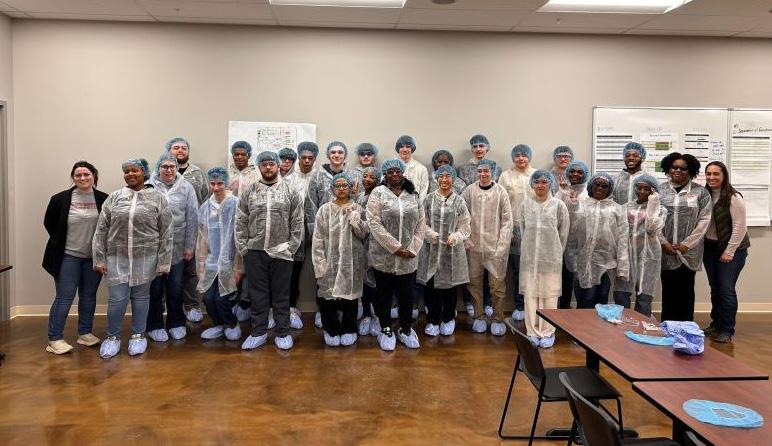
Cornell University recently collaborated with Byrne Dairy to host local CNY students at the Byrne DeWitt manufacturing facility. Cornell workforce specialists Taylor and Hannah led educational sessions over two days, covering topics such as dairy processing, interview skills, resume building, benefits, career exploration, and more. Byrne Dairy was delighted to present its own panelists to highlight the opportunities and career growth available within the company!
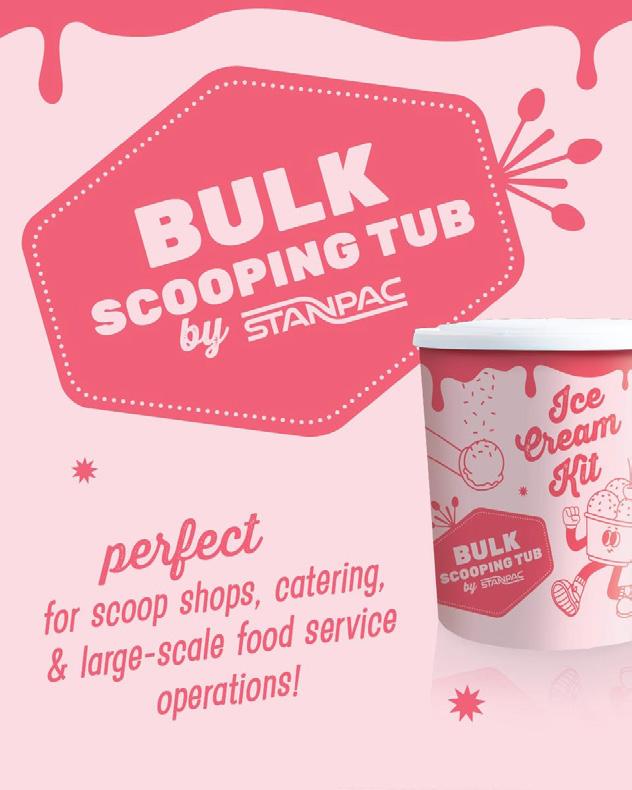




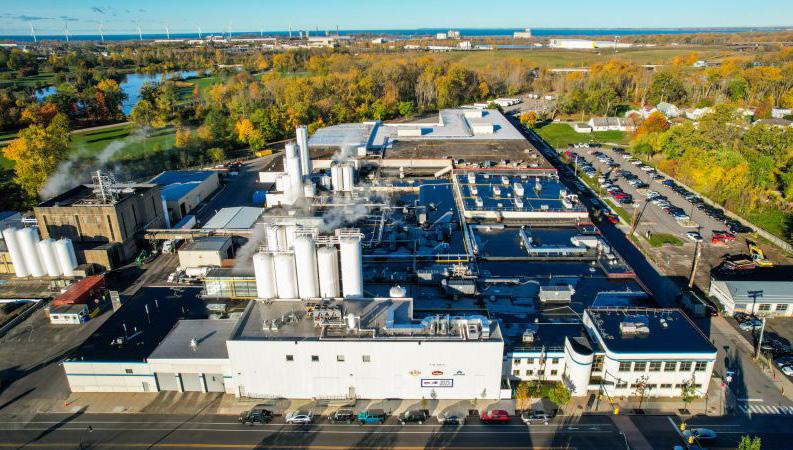
We’re proud to announce that Lactalis American Group has been named 2025 Manufacturer of the Year by Buffalo Business First! Buffalo is central to our success with nearly 800 outstanding employees, more than 200 dairy farm partners who produce an unsurpassed quality of milk, and strong local leadership. This is why we’ve invested more than $111 million in our local facilities since 2020 and are committed to future growth in Western New York. 2024 was a great year for Lactalis in Buffalo highlighted by the completion of our Culinary & Sensory Institute, 15 awards for locally produced cheese in major competition, and continued growth. We can’t wait to see what the future brings for Lactalis in Western New York!
Introducing... A tub big enough to keep the party going! Stanpac’s new Bulk Scooping Tubs are PERFECT for scoop shops, catering & large-scale food service operations.
Are you in the market for full-colour printing that lets you showcase your logo, branding and product details? How about a stackable design with a grooved composite lid for added stability, easy transport, and convenient storage? And what if it arrived pre-formed and nested to allow for easy dispensing and filling while eliminating the need for forming equipment?
If you said yes to any of these, then let’s chat about making your bulk ice cream packaging run smoother than a perfect scoop! Get started today by calling 905.296.1199 or emailing quinton.duncan@stanpacnet.com.
